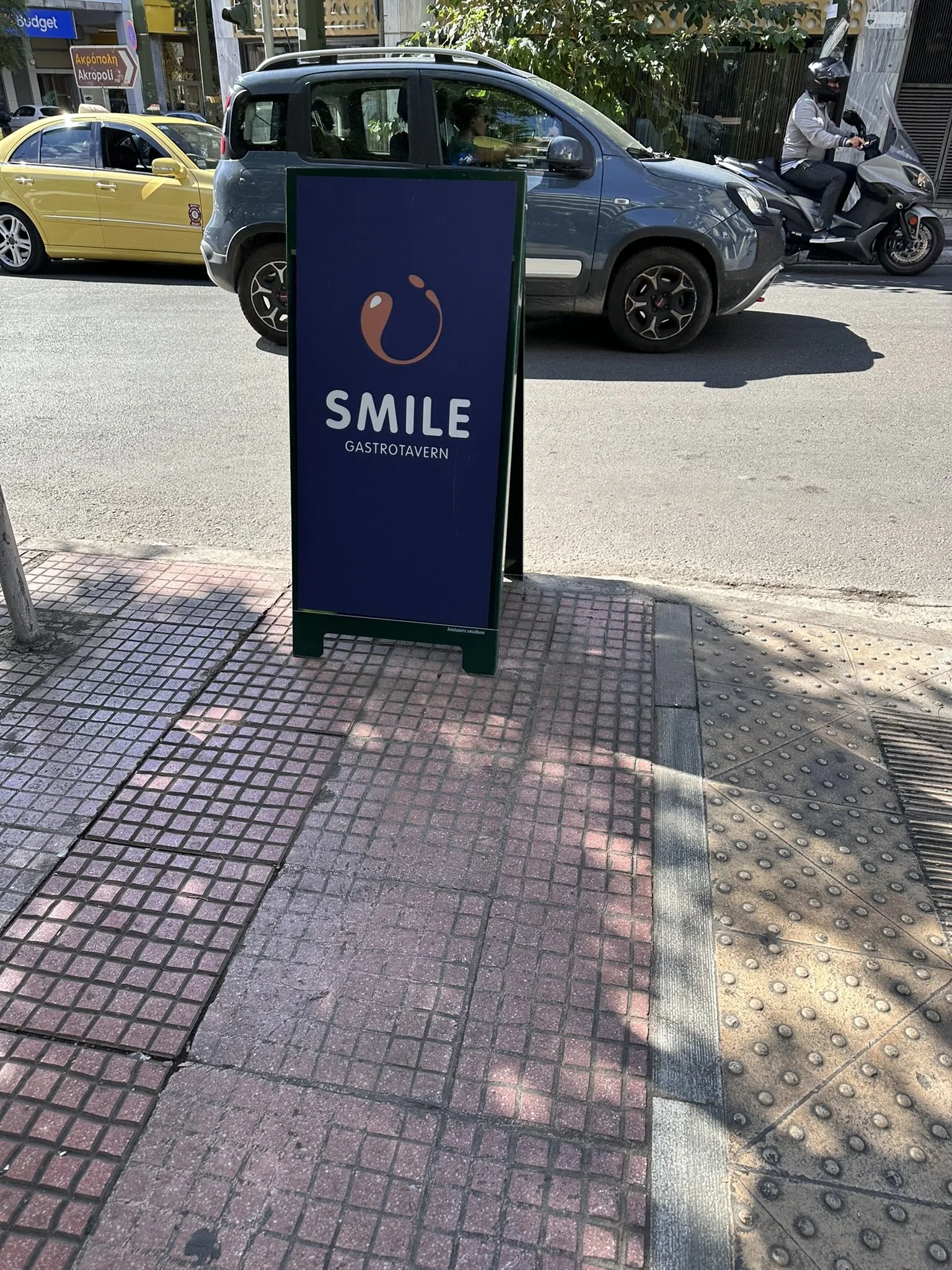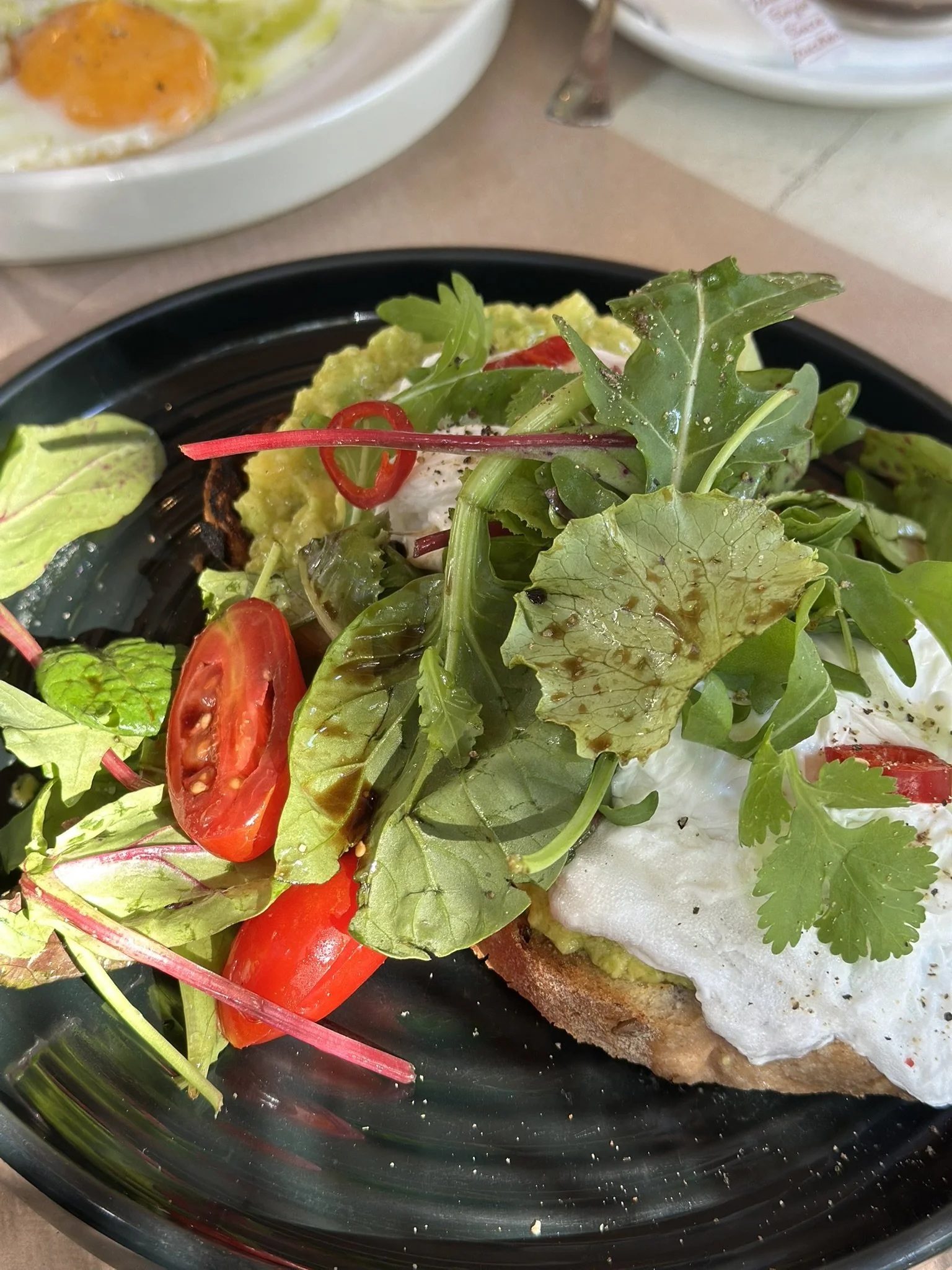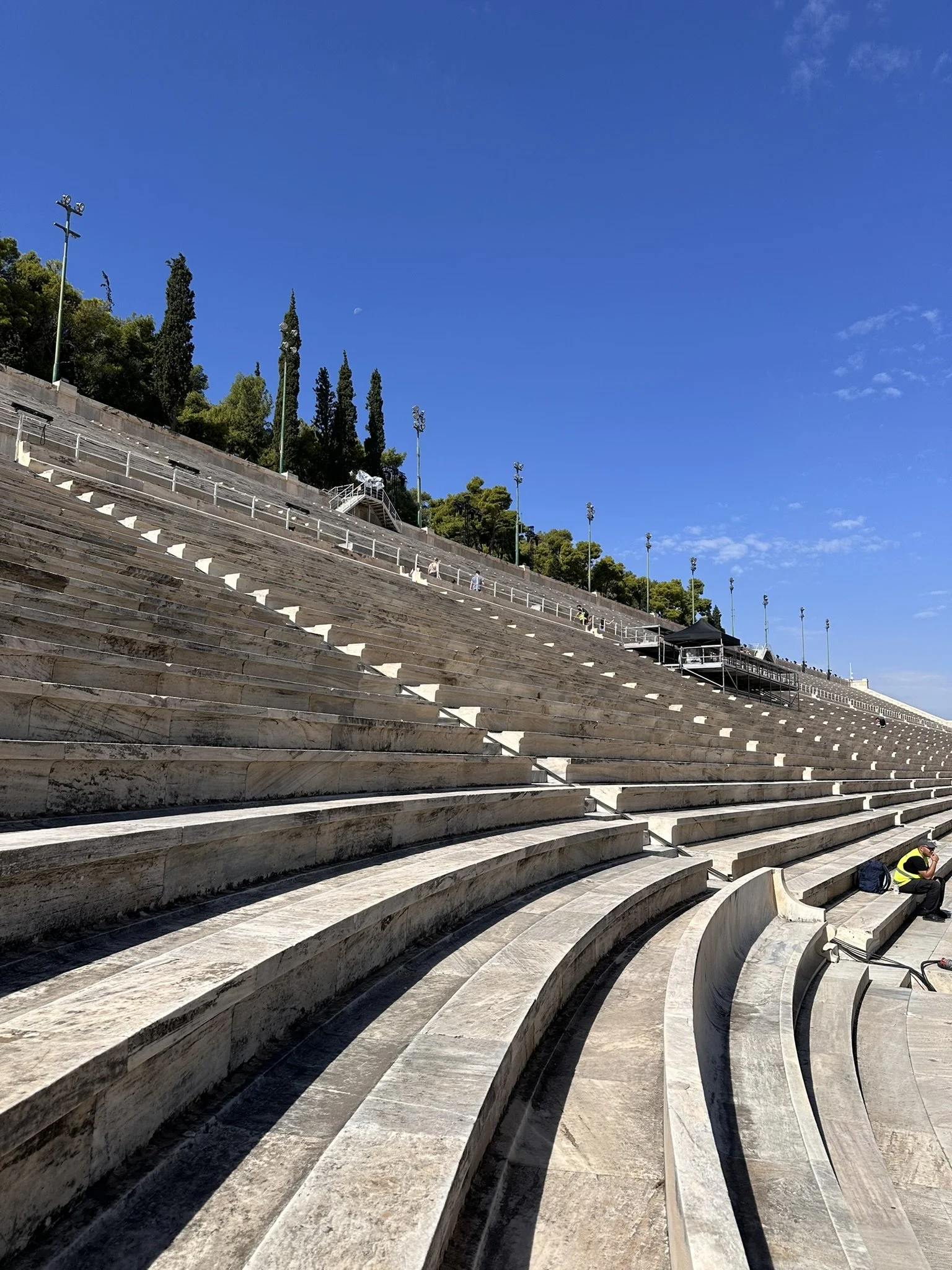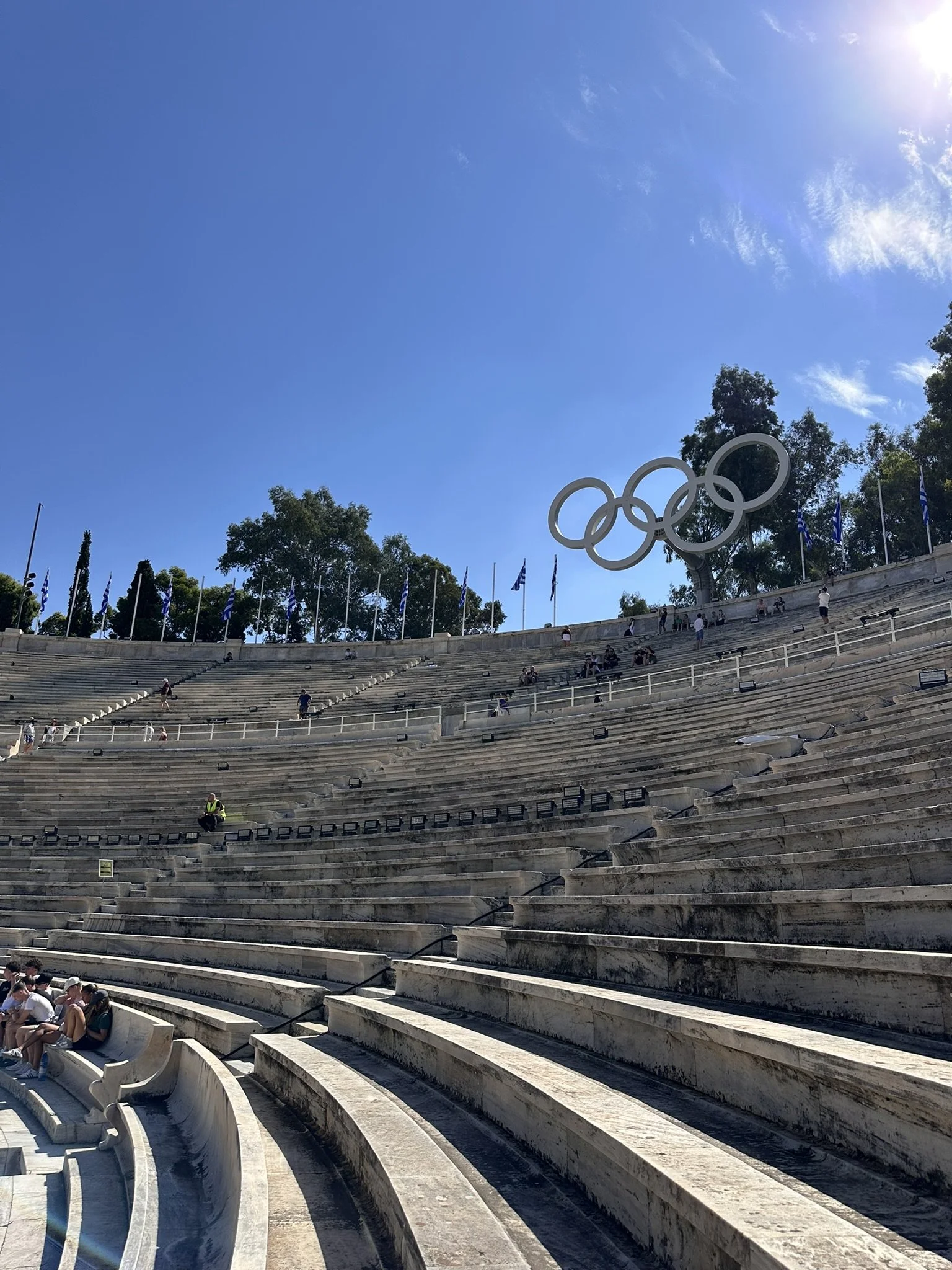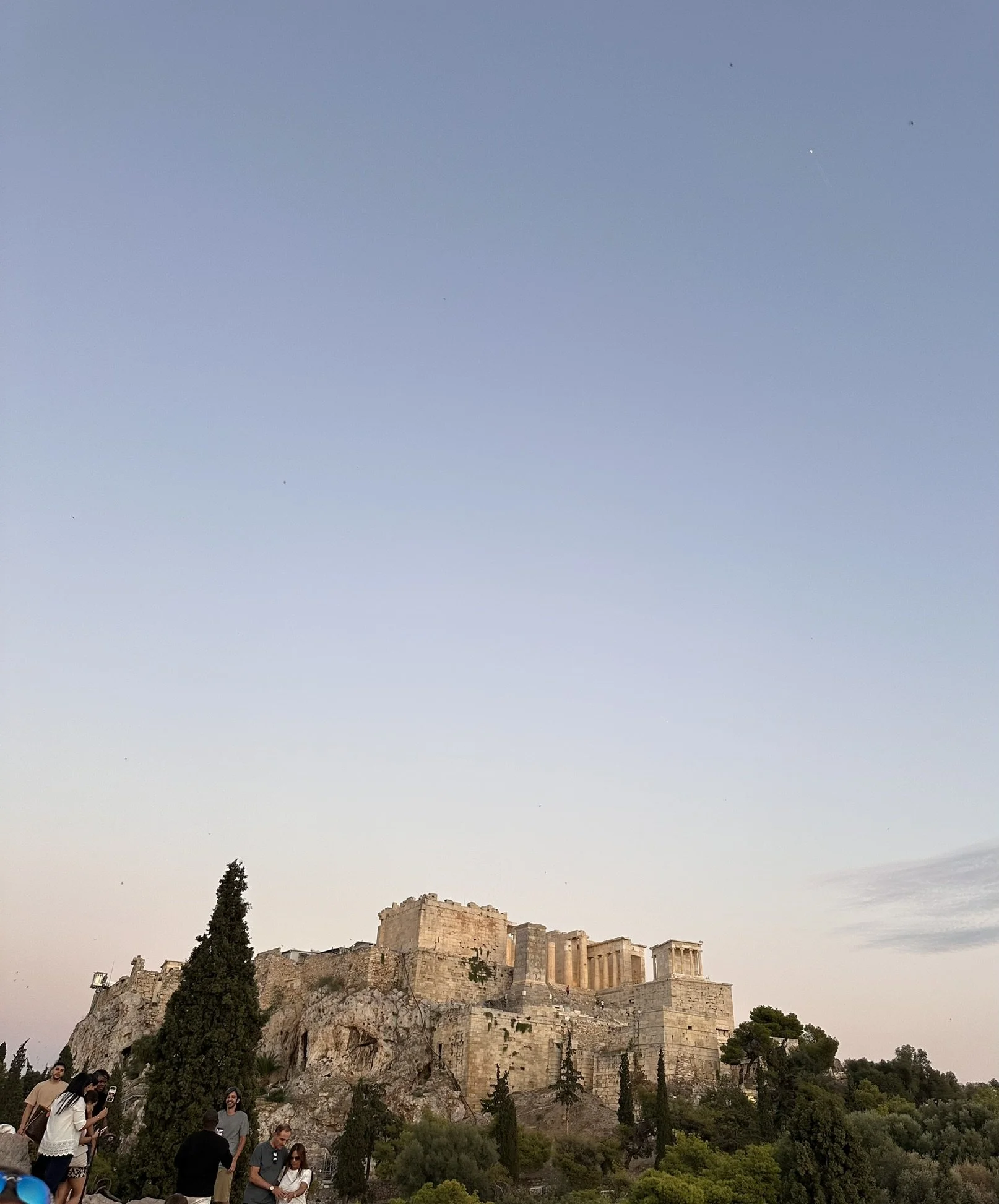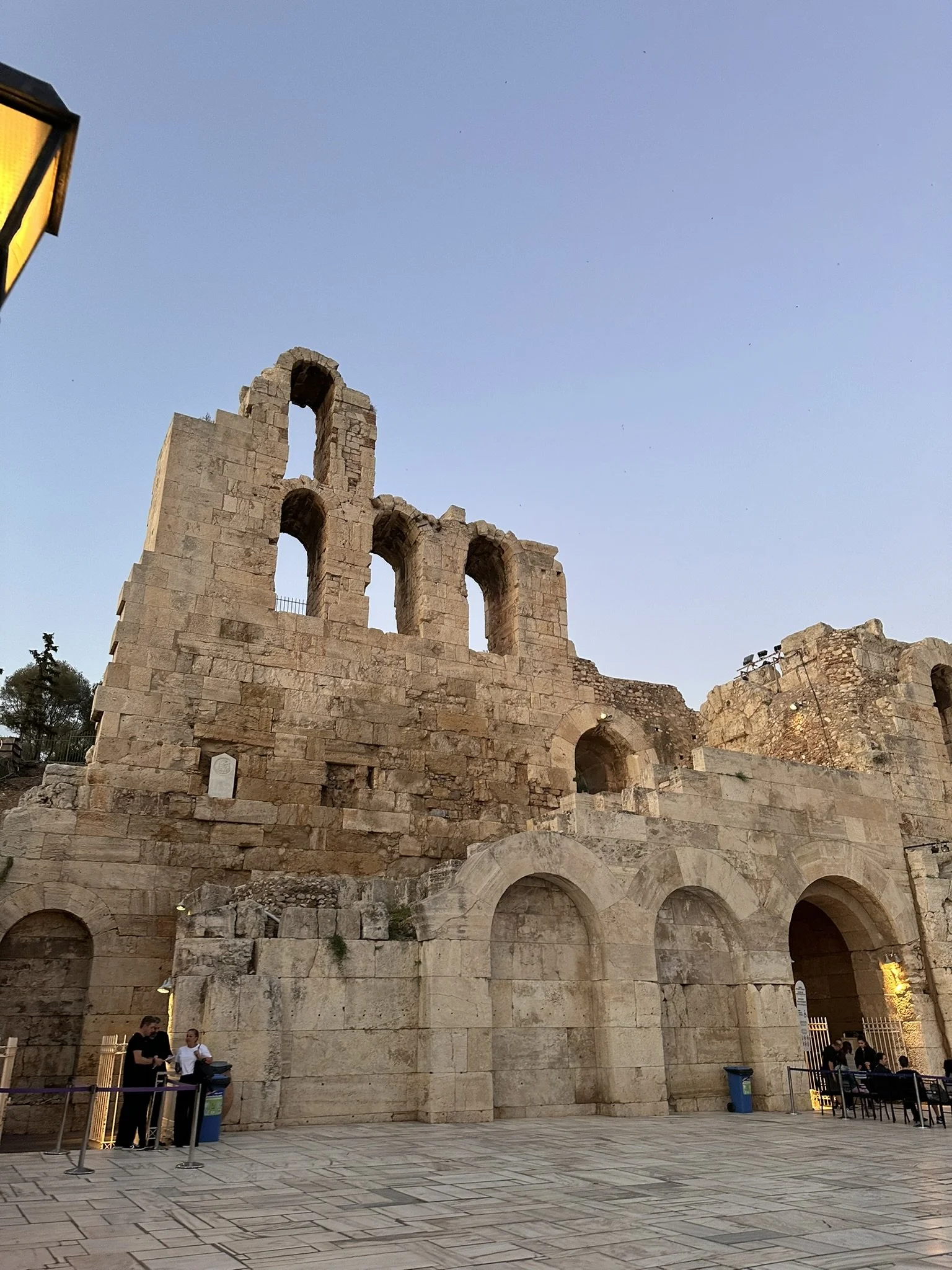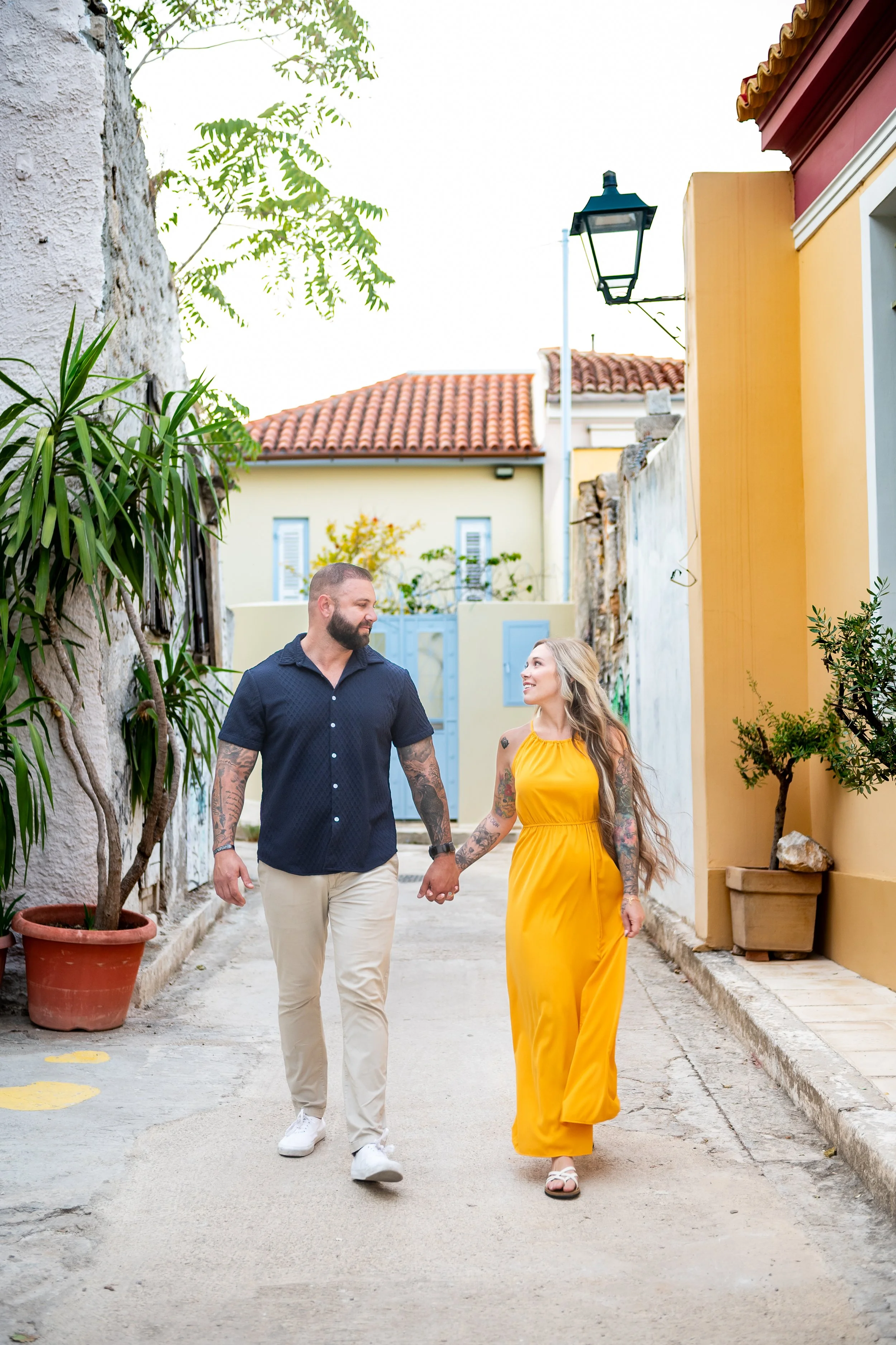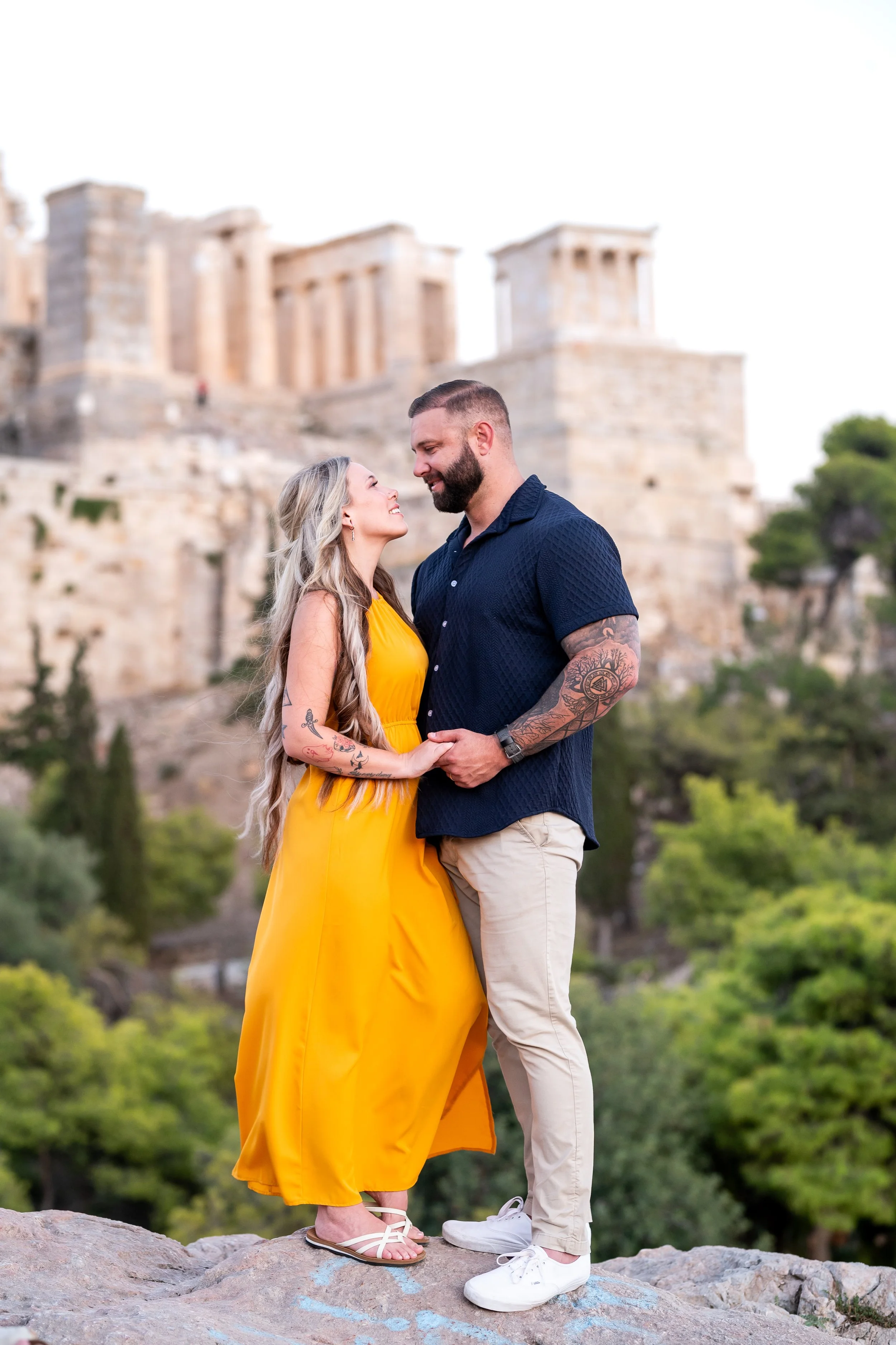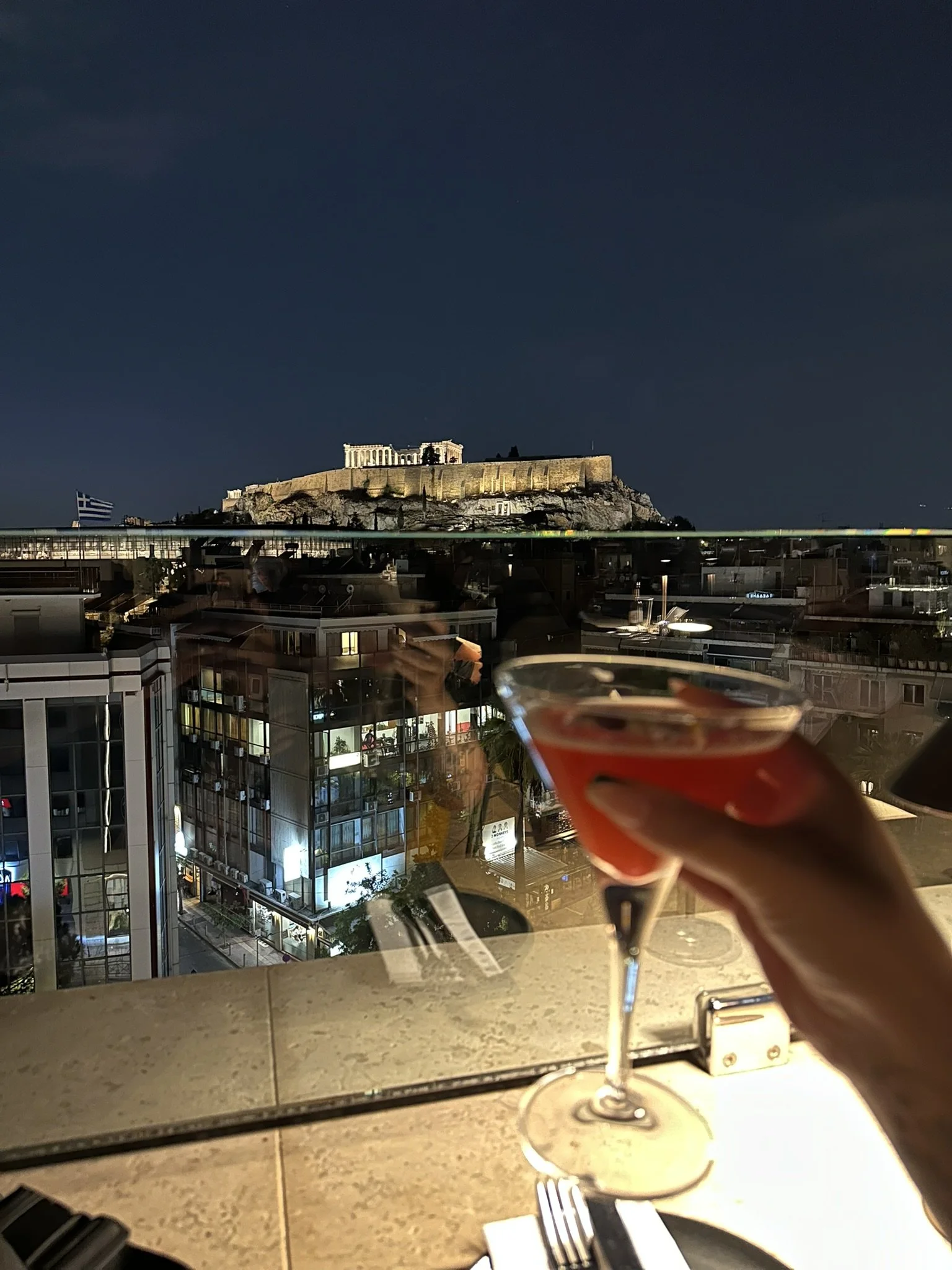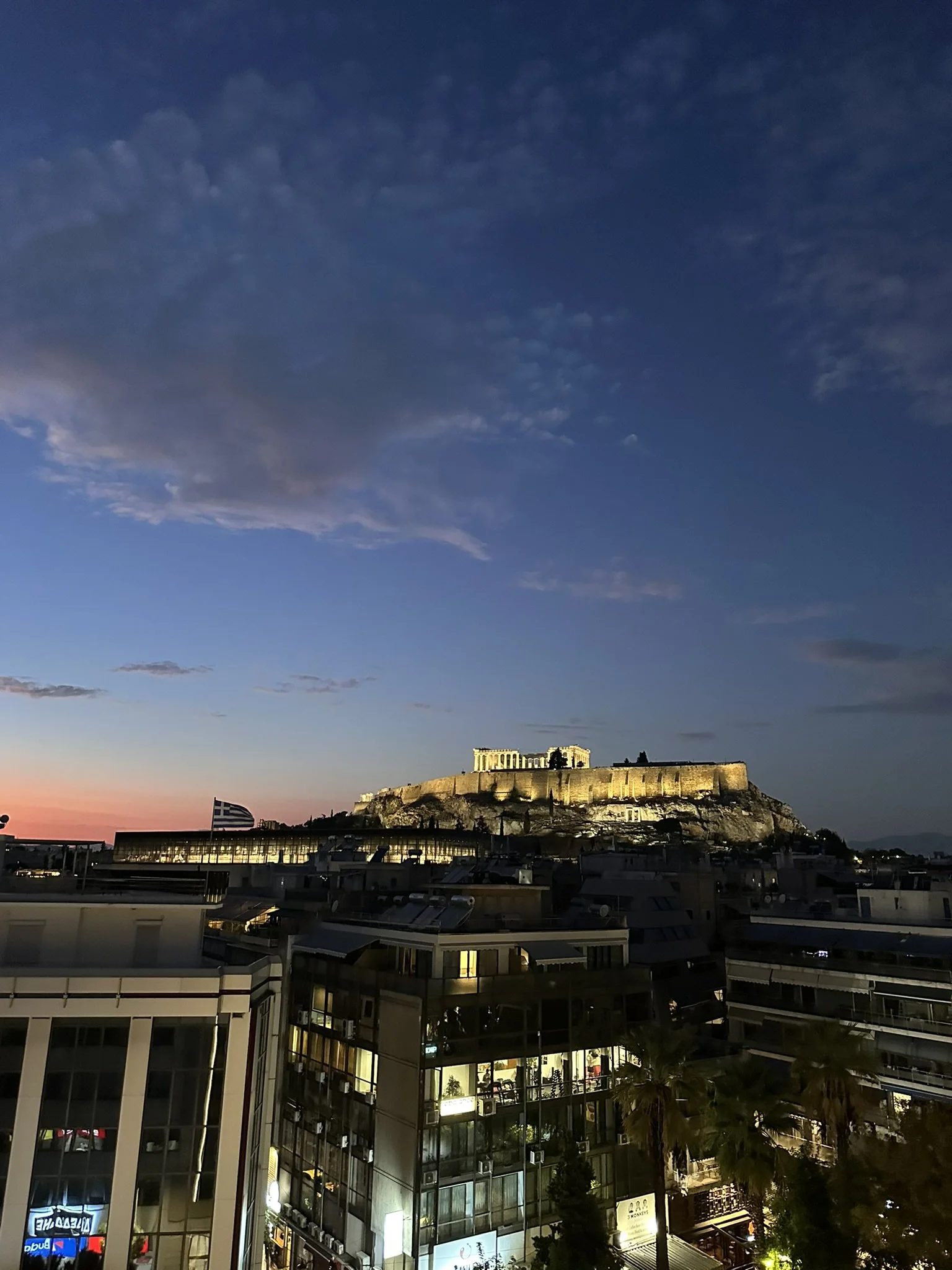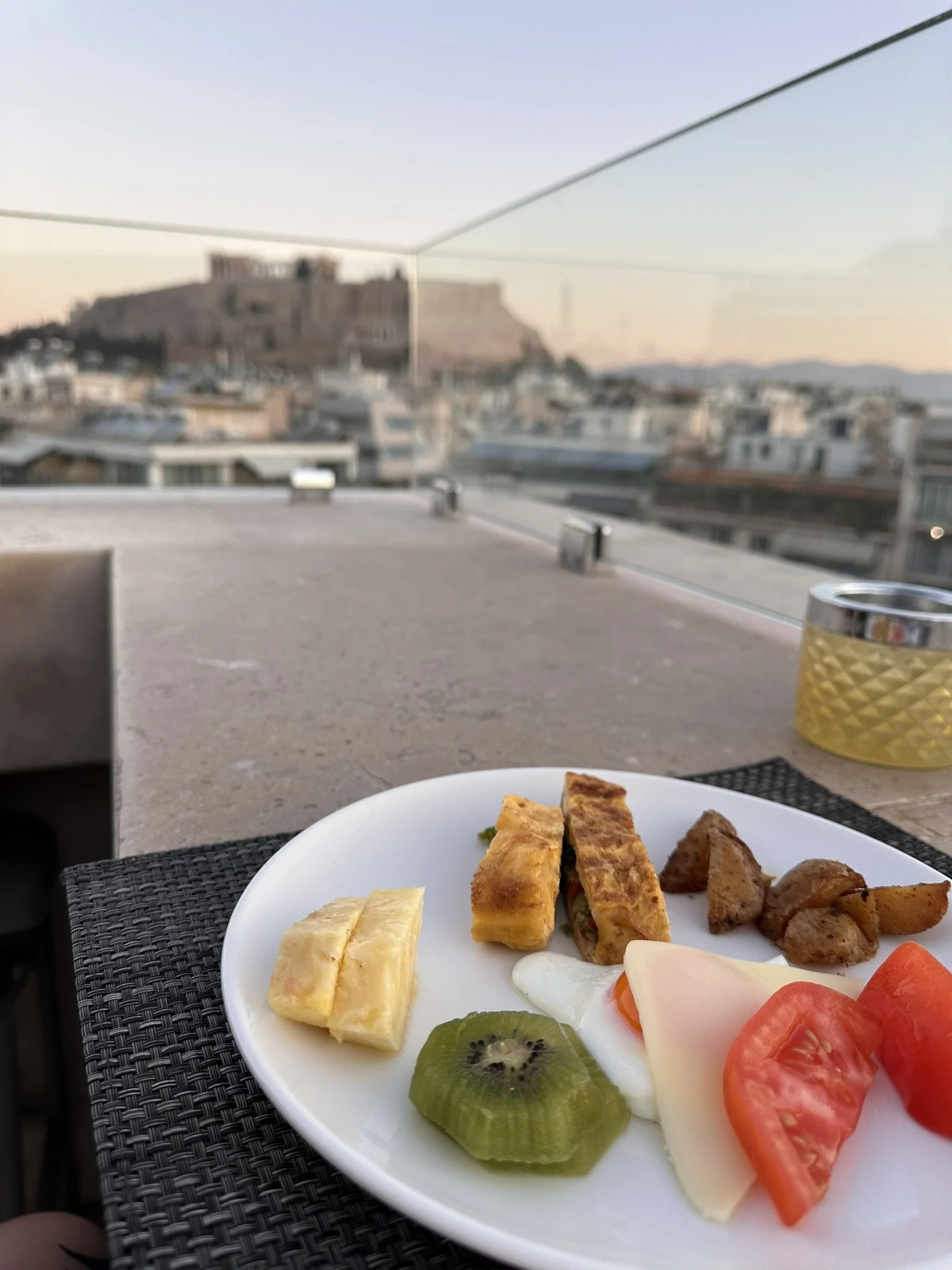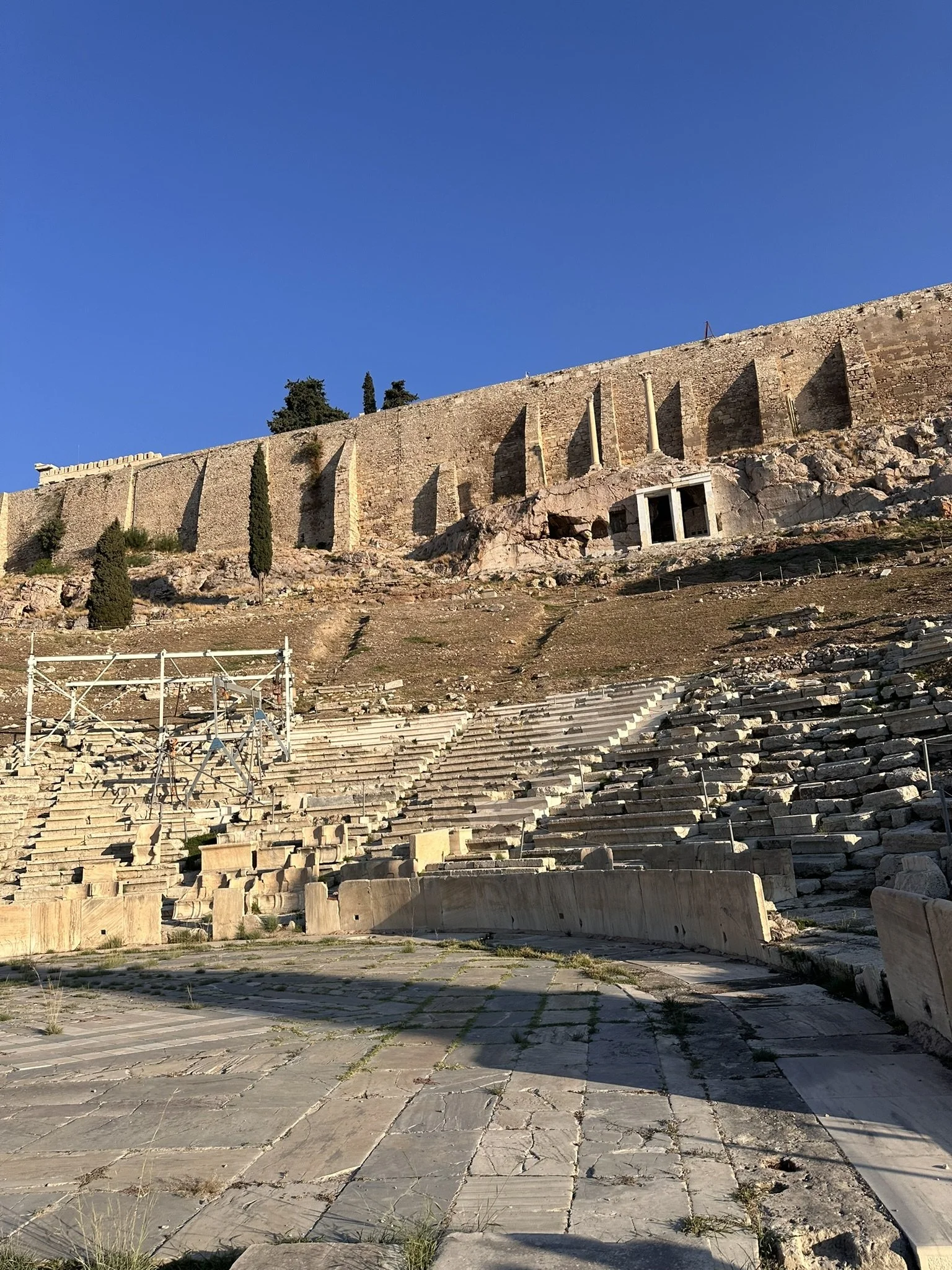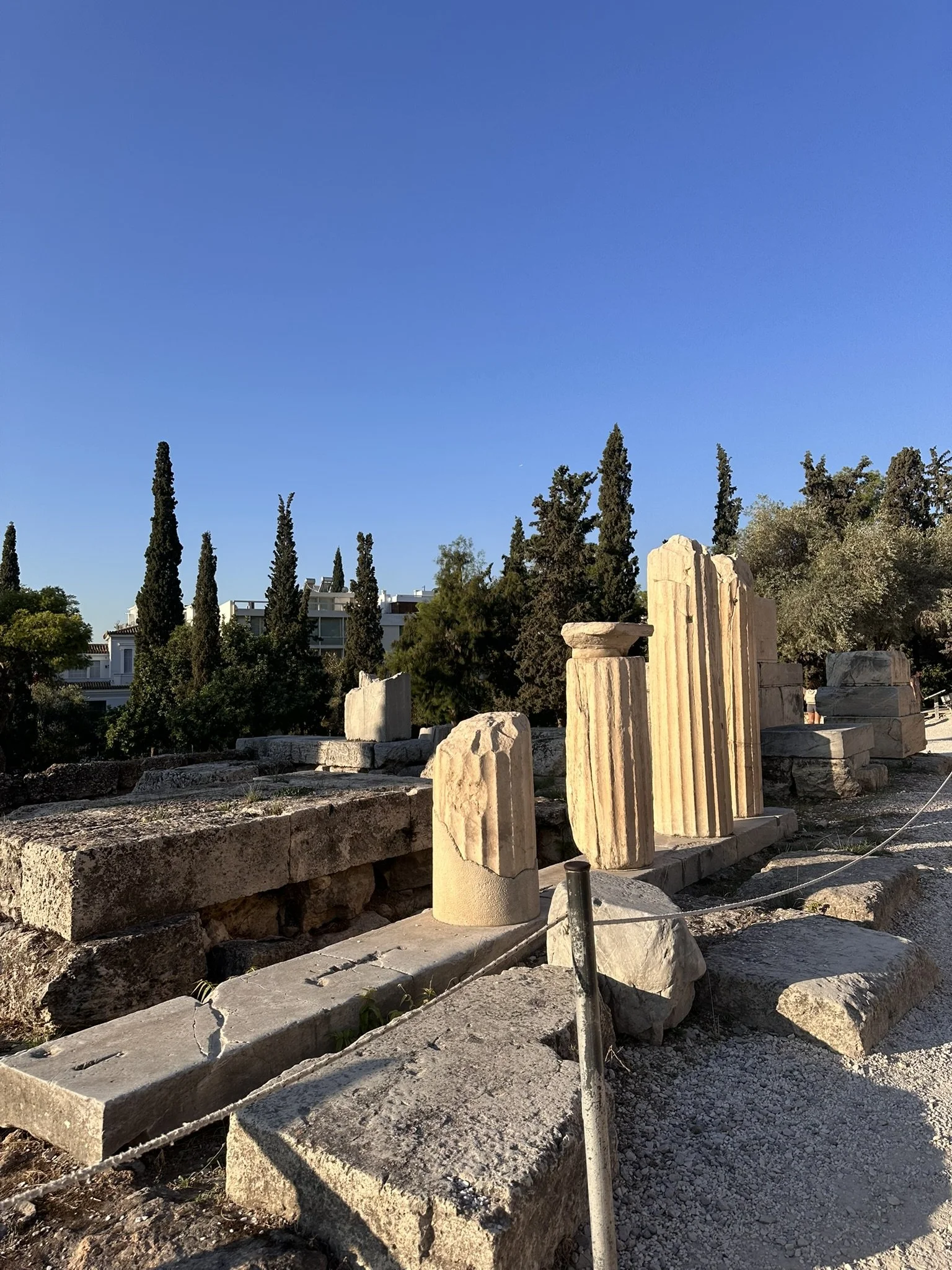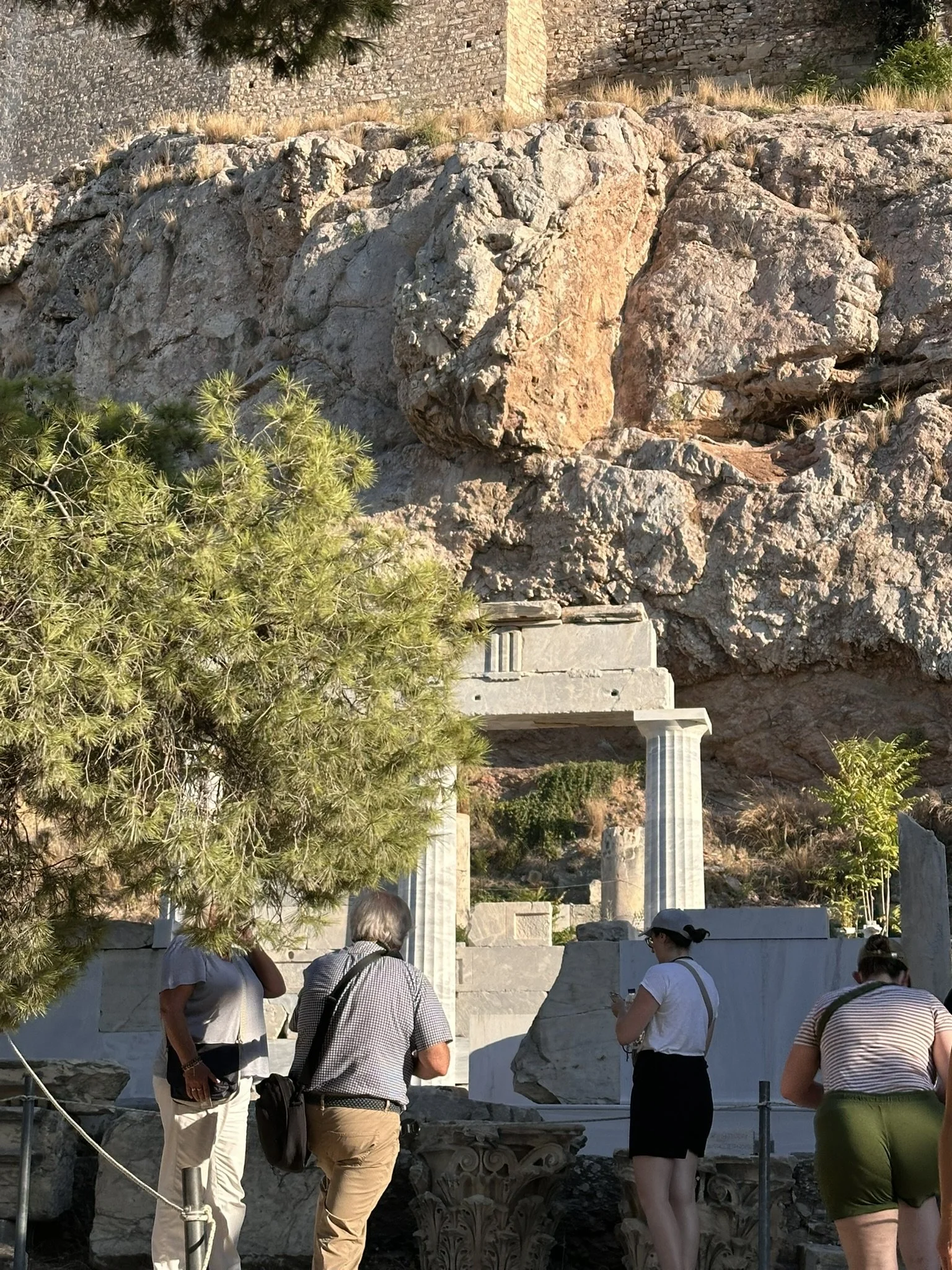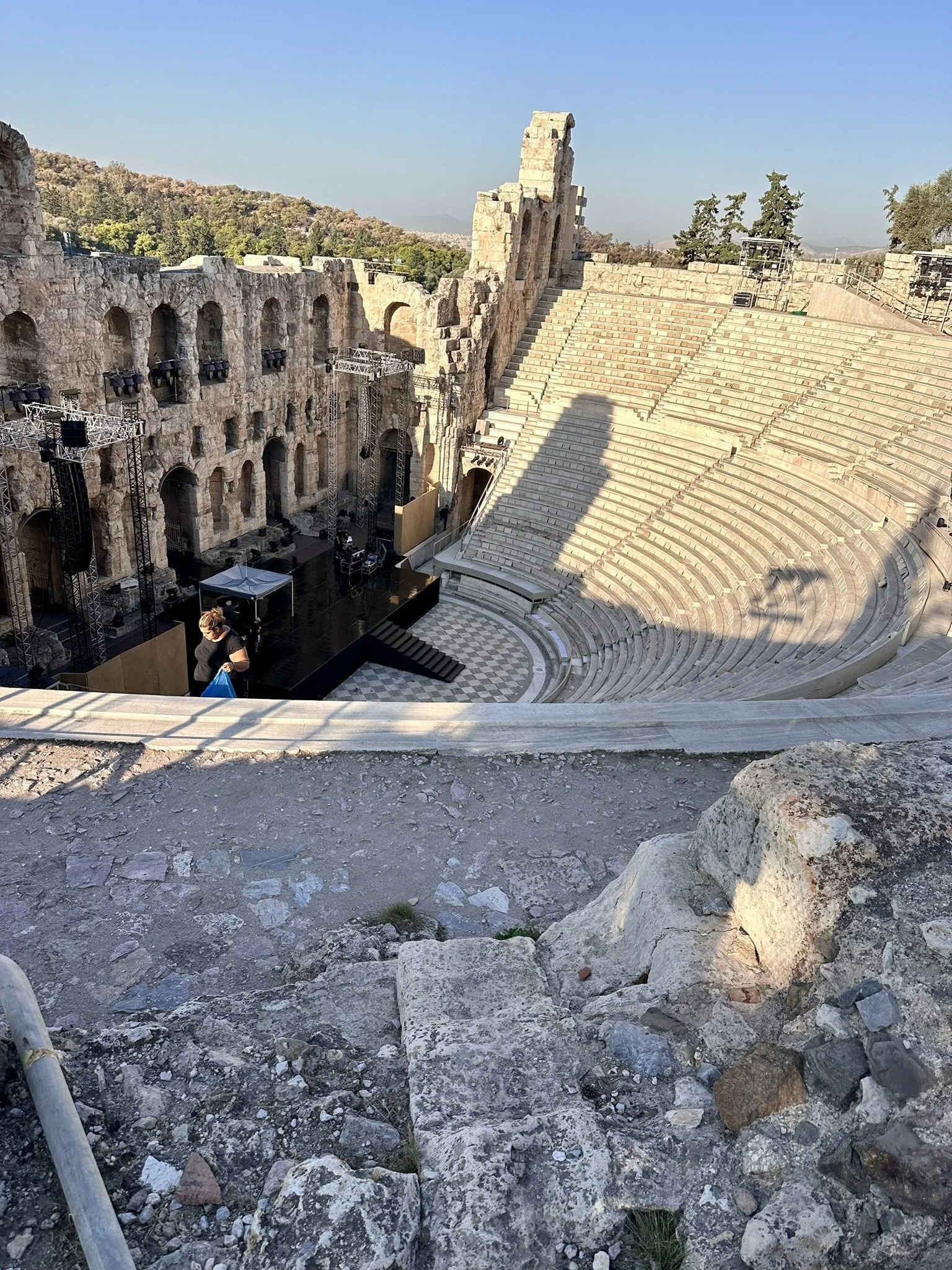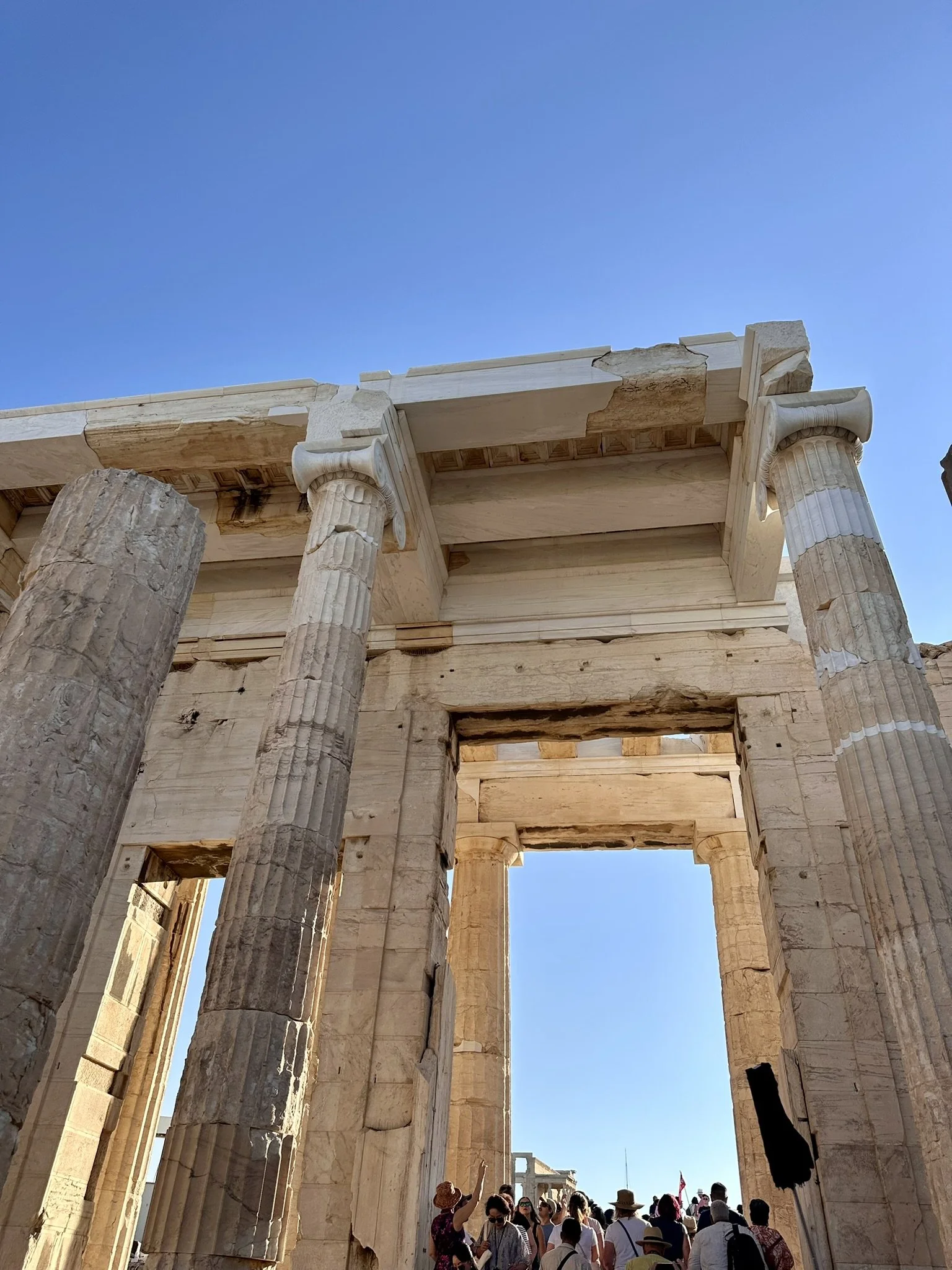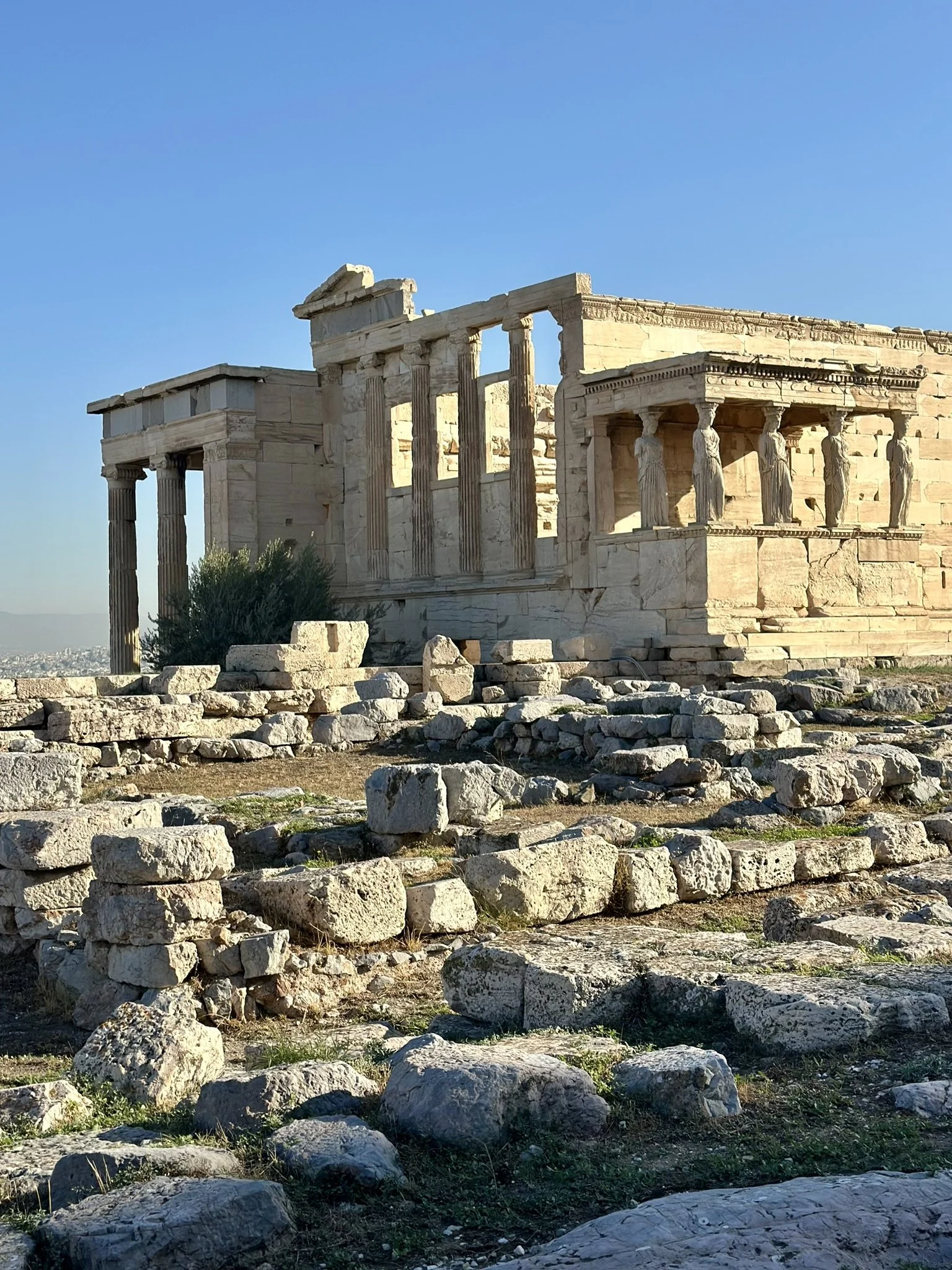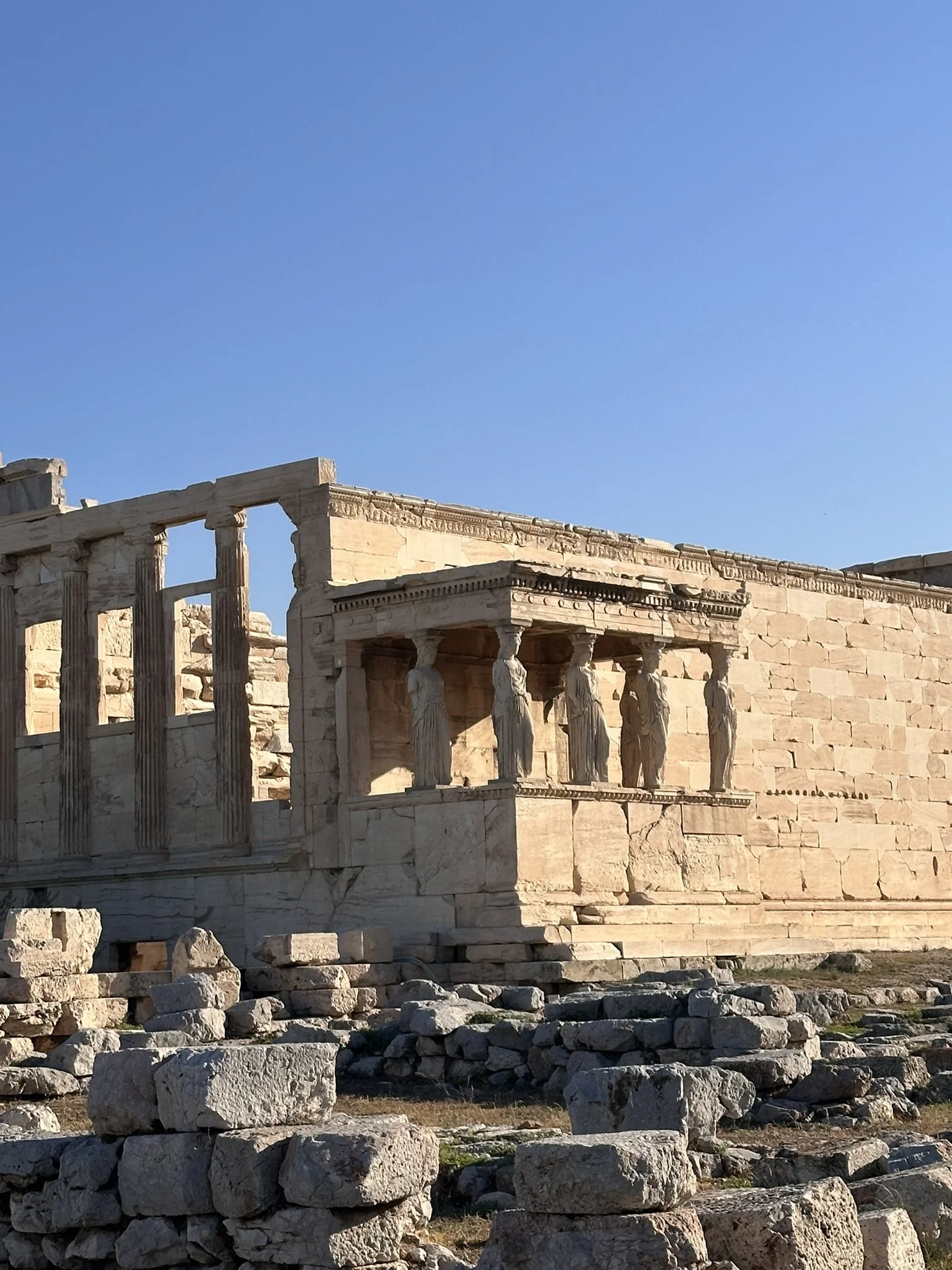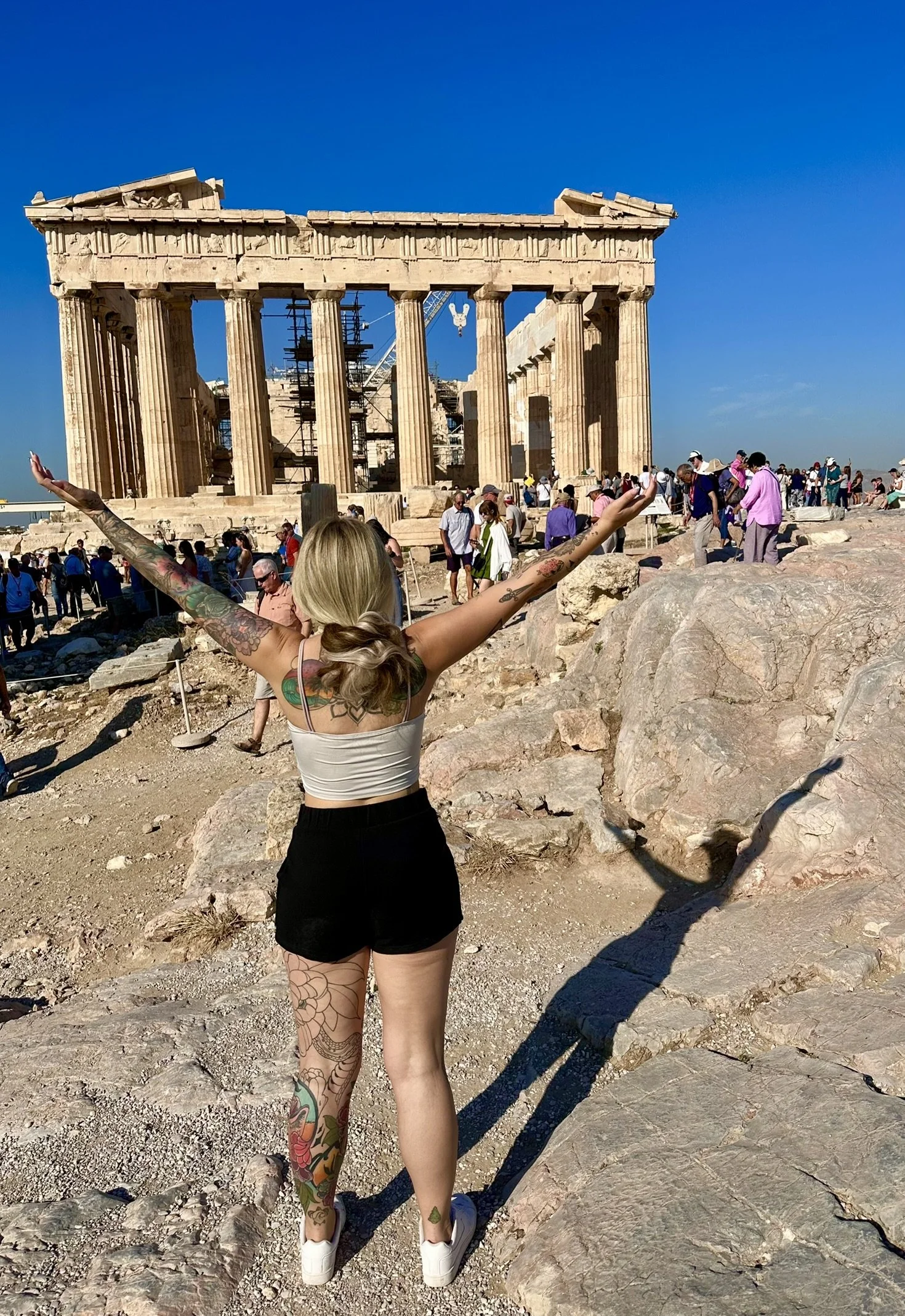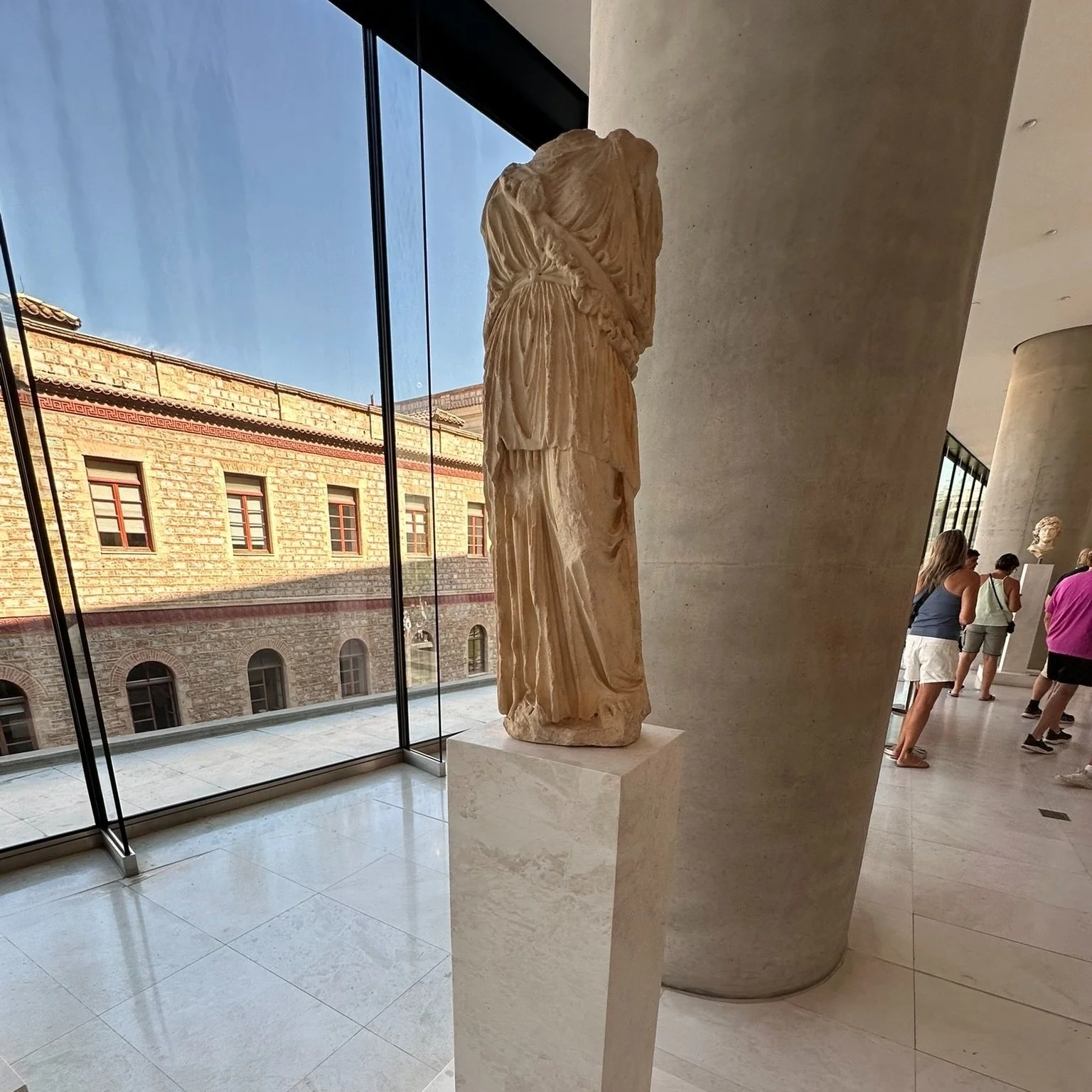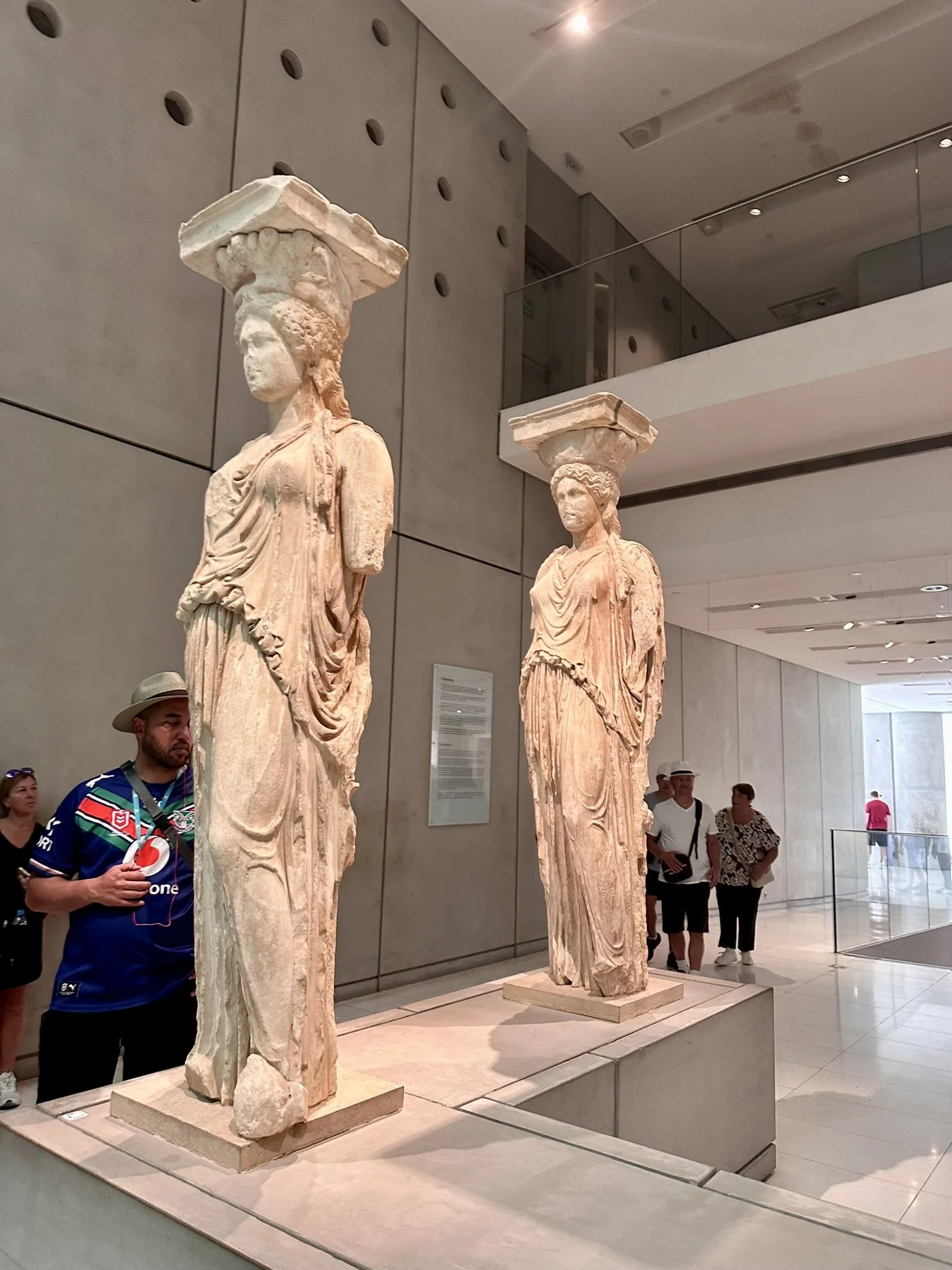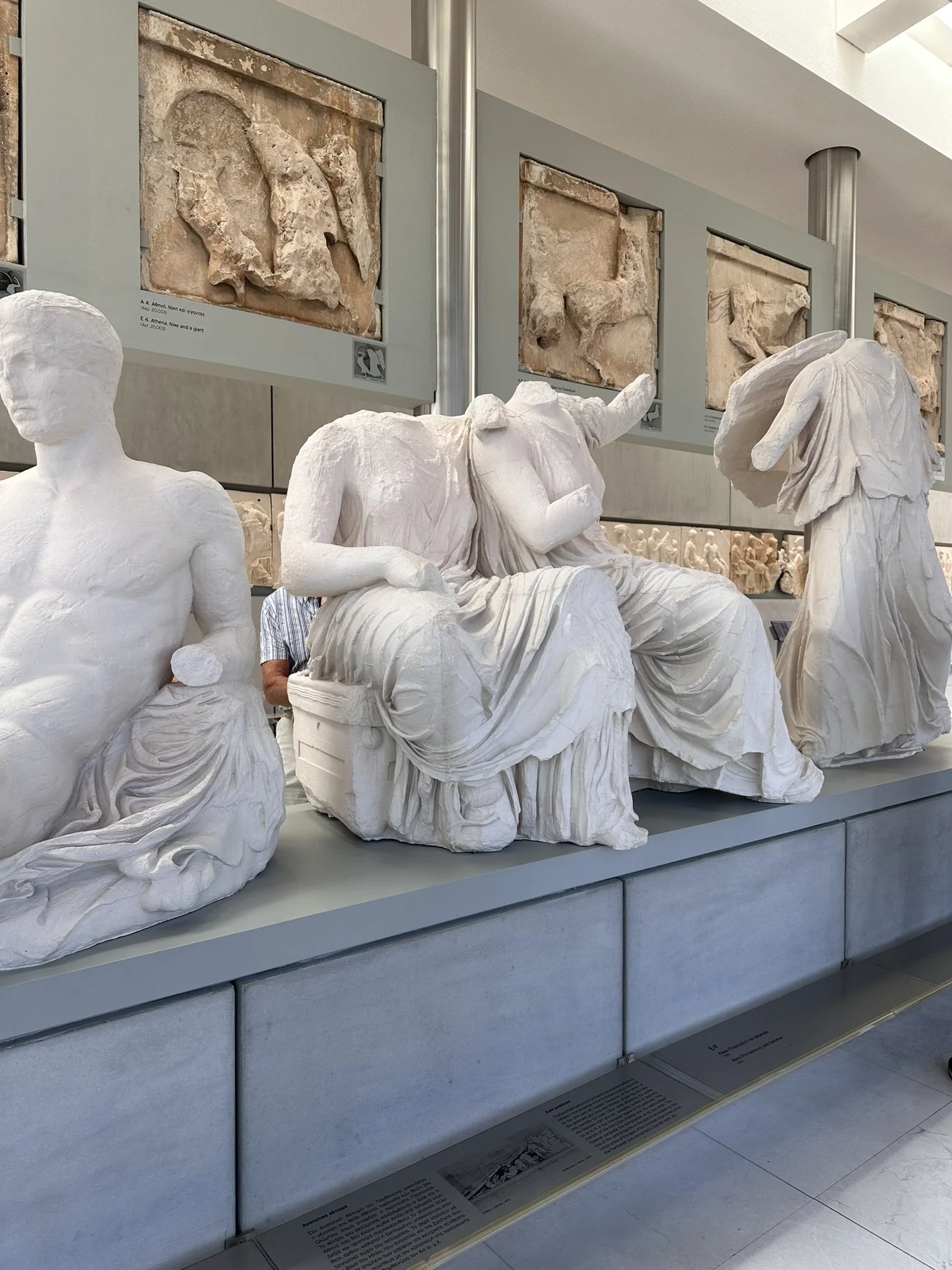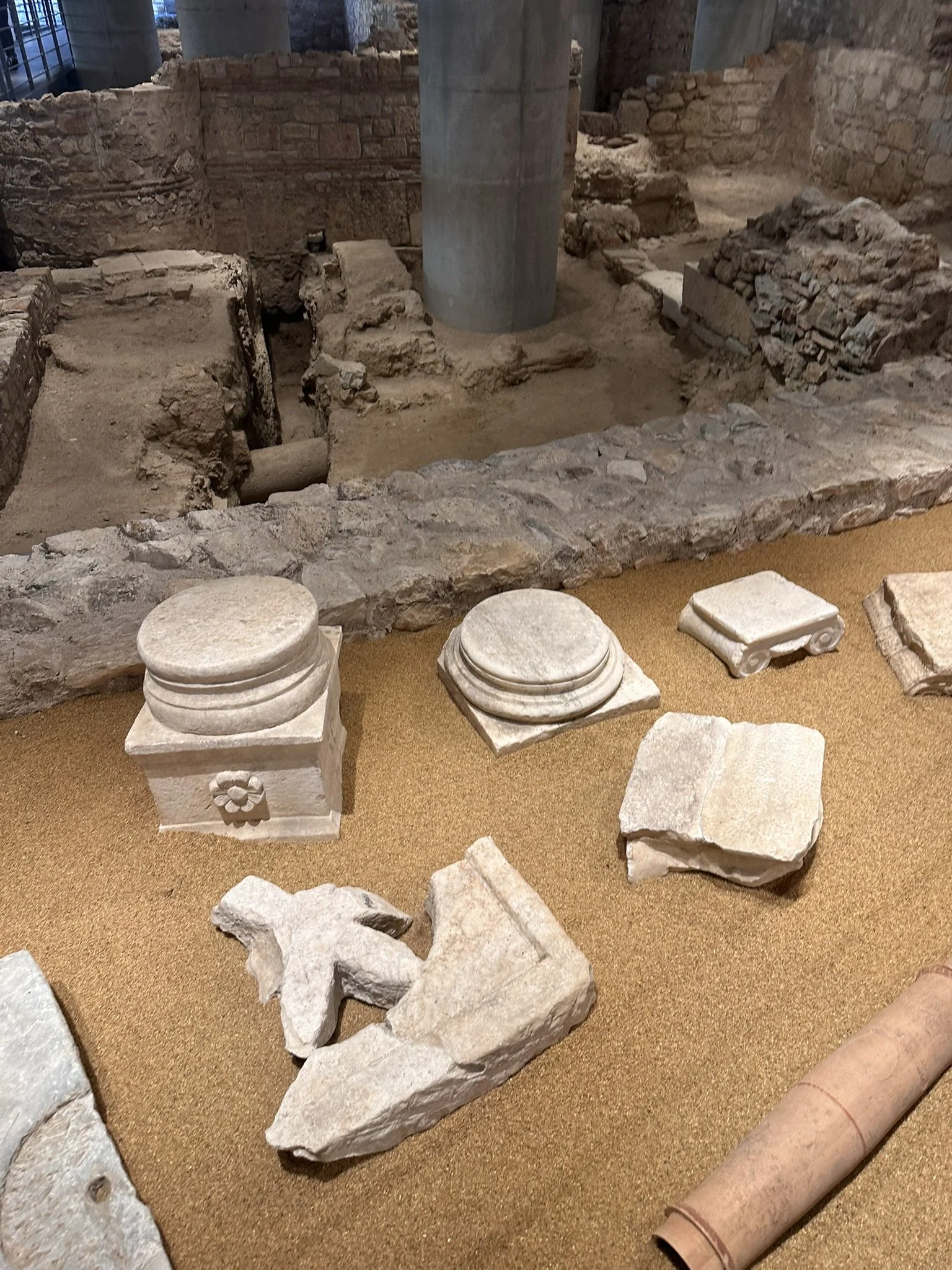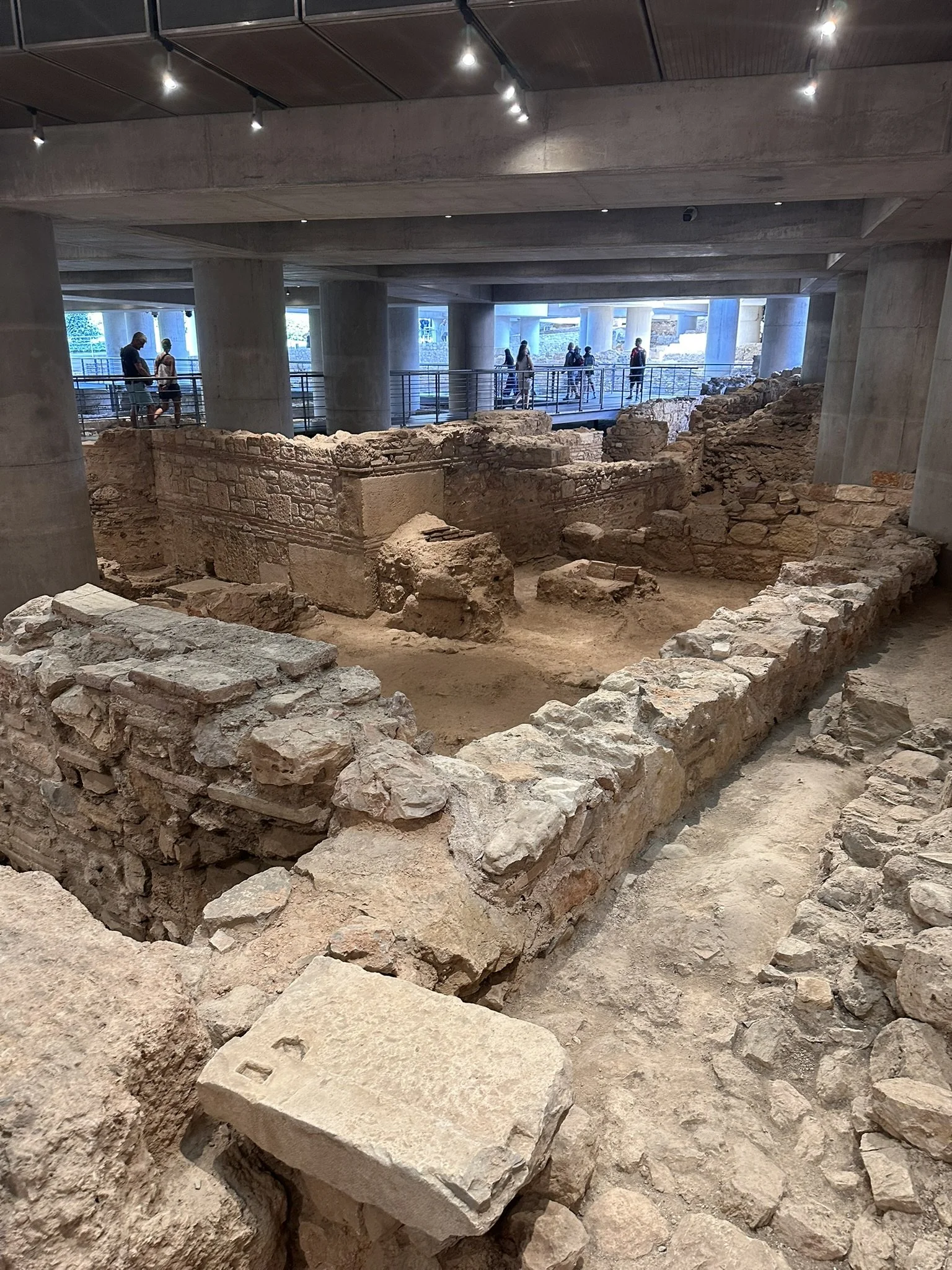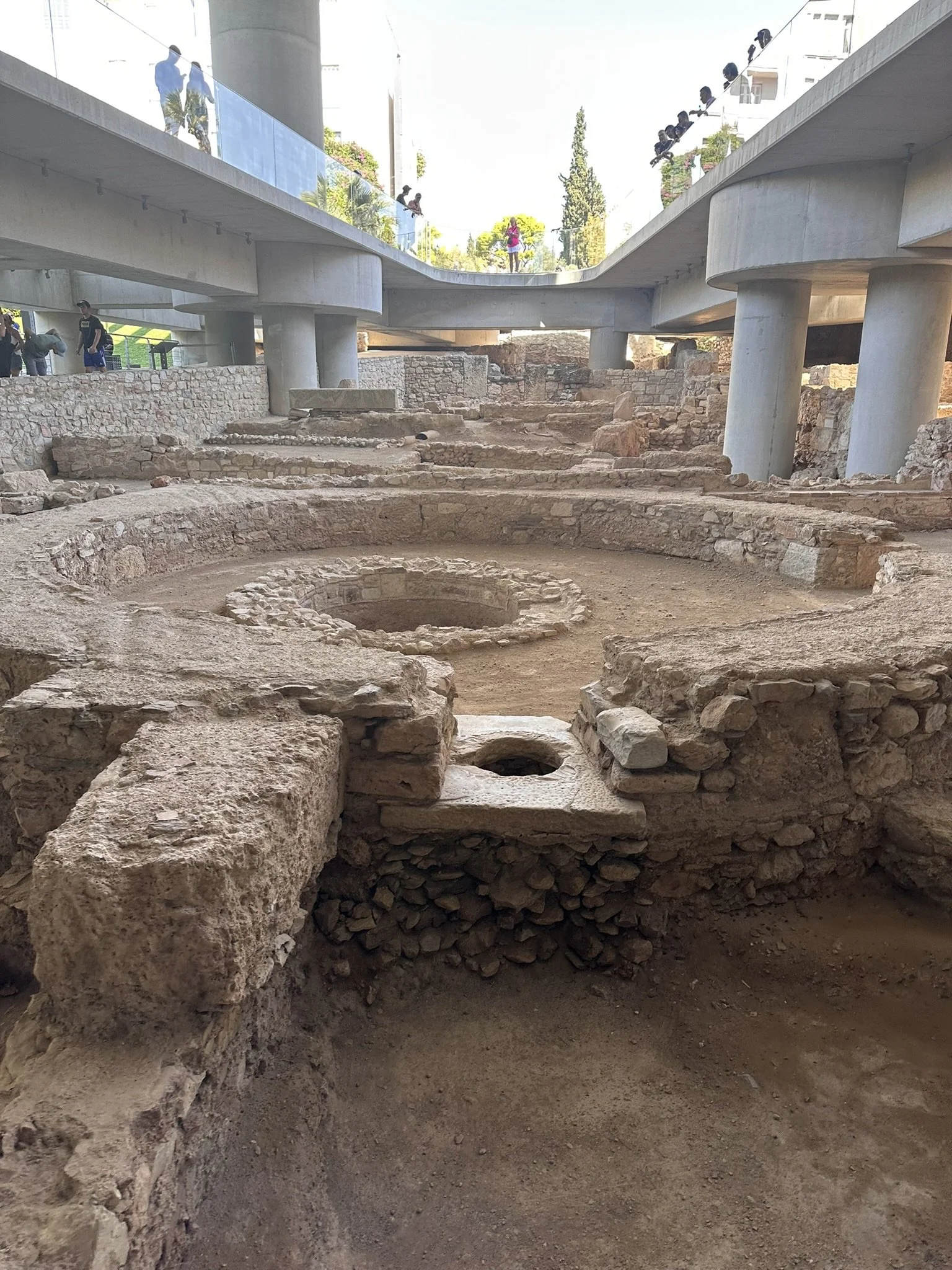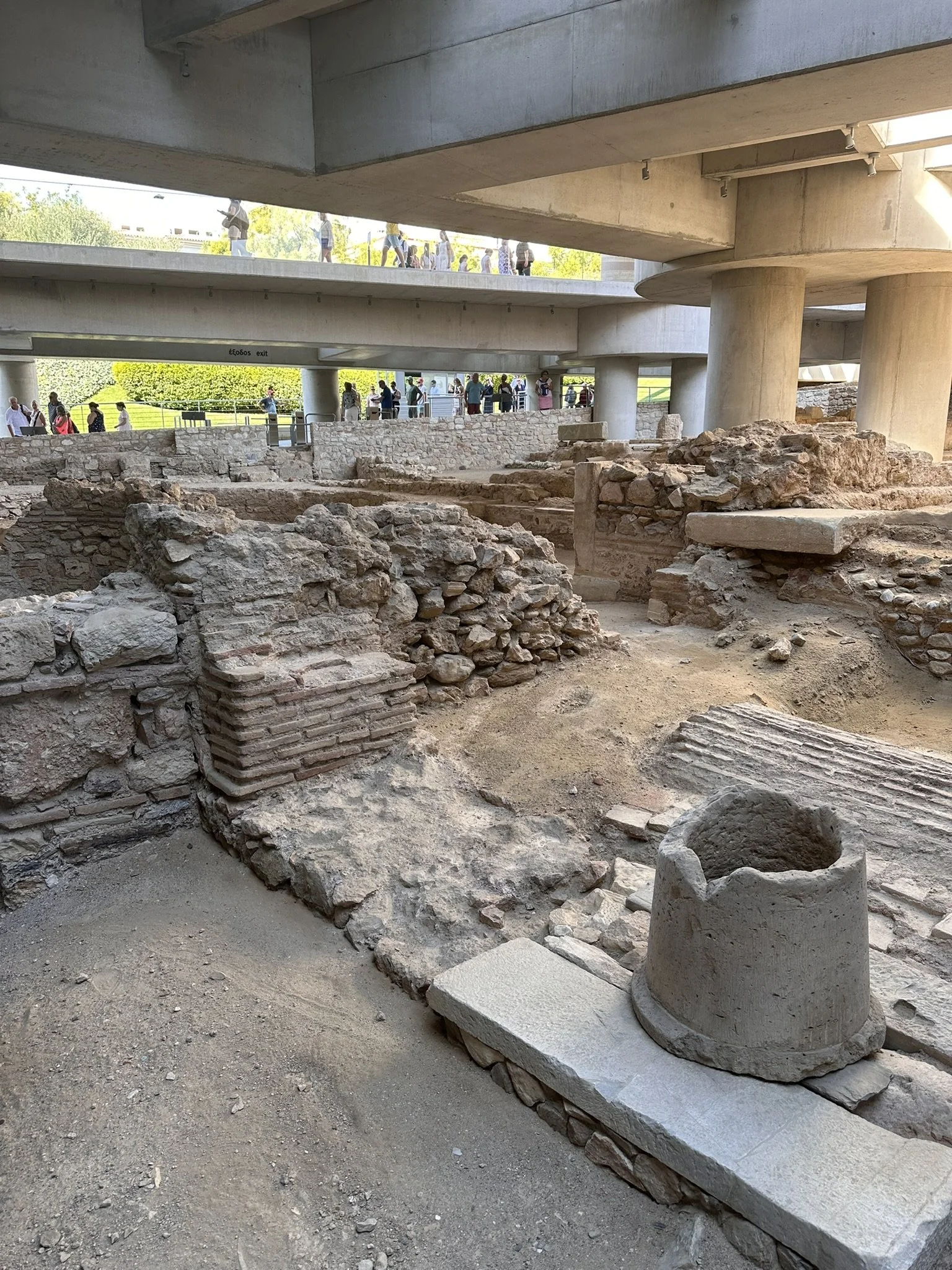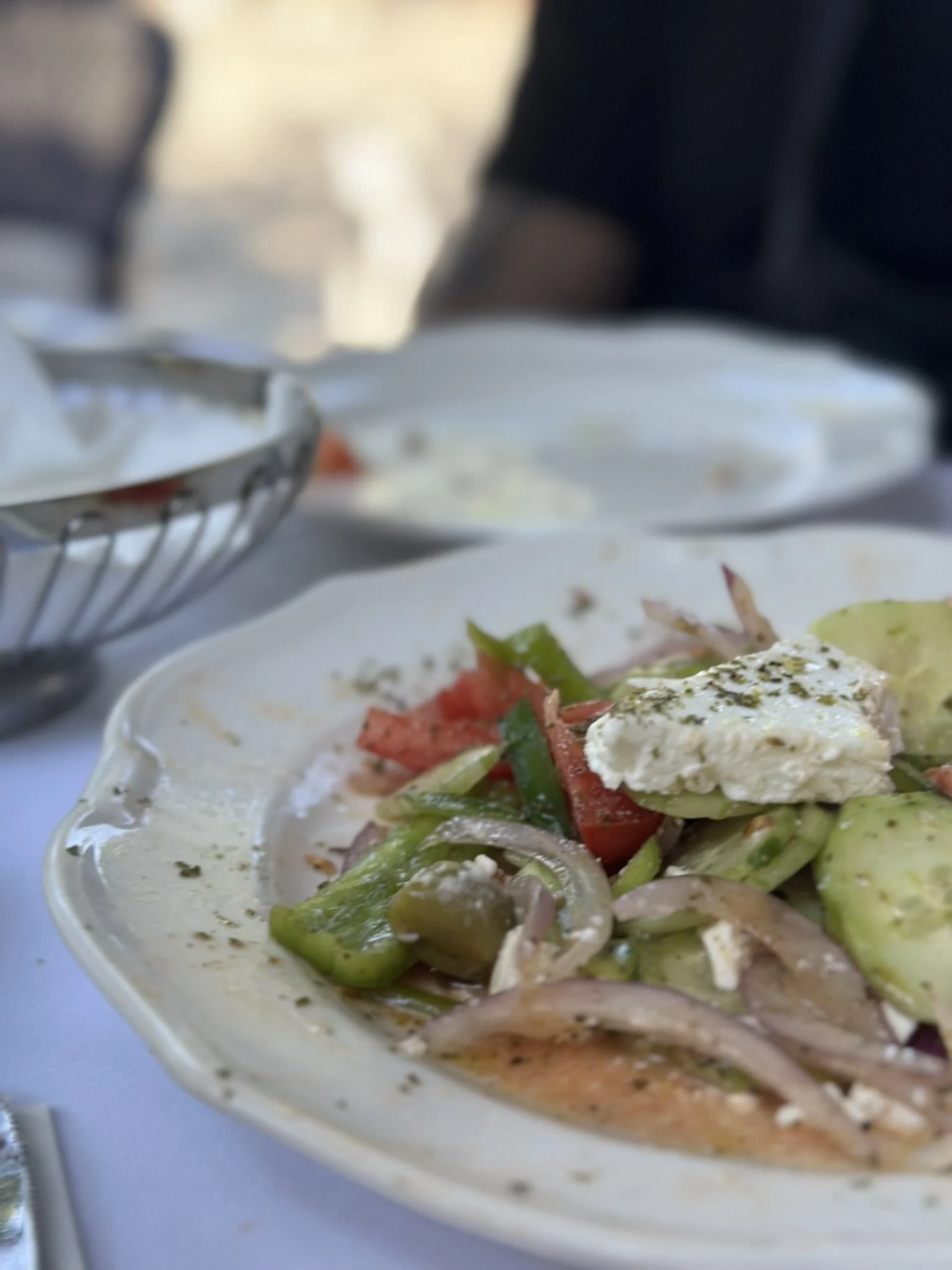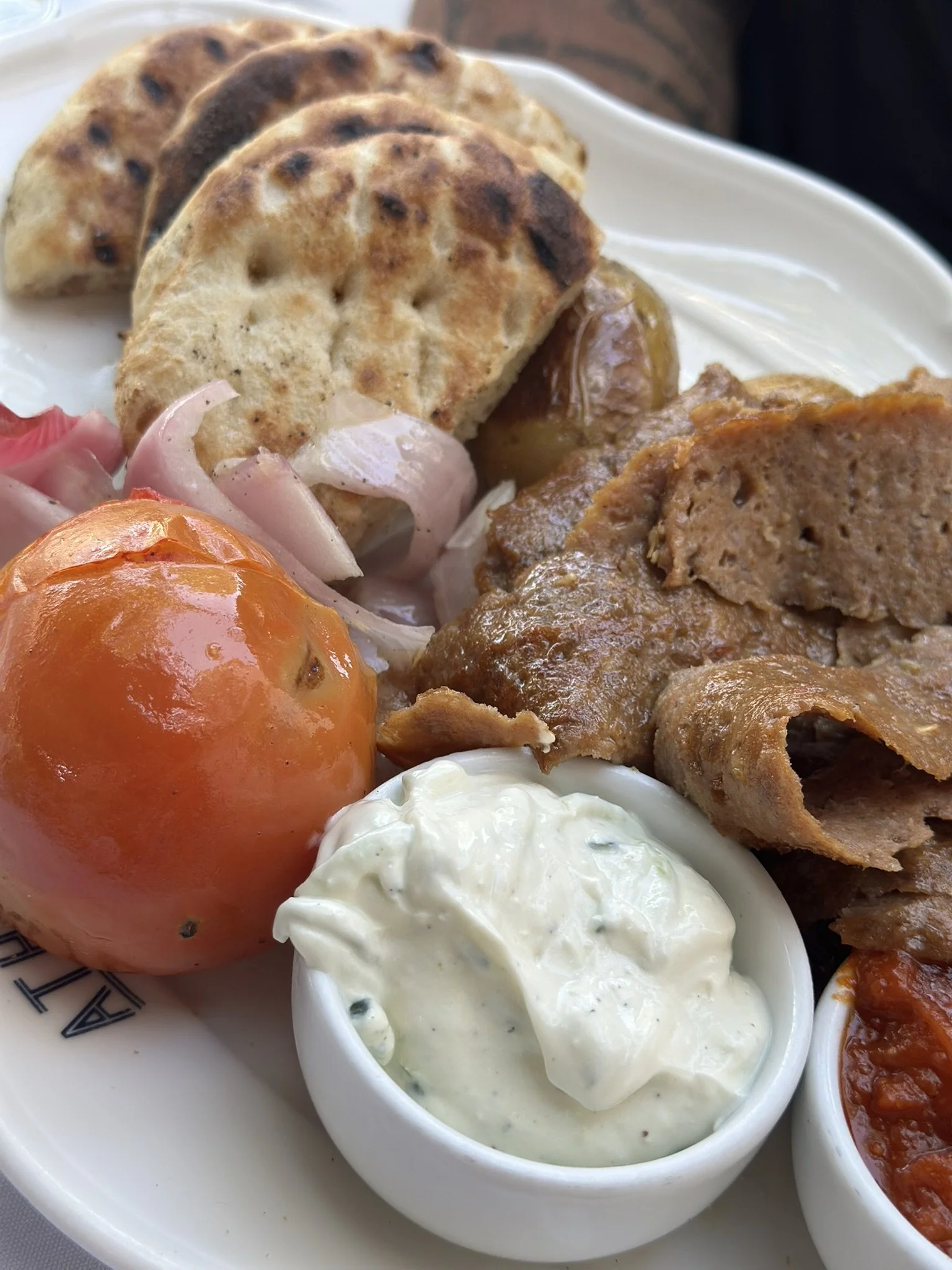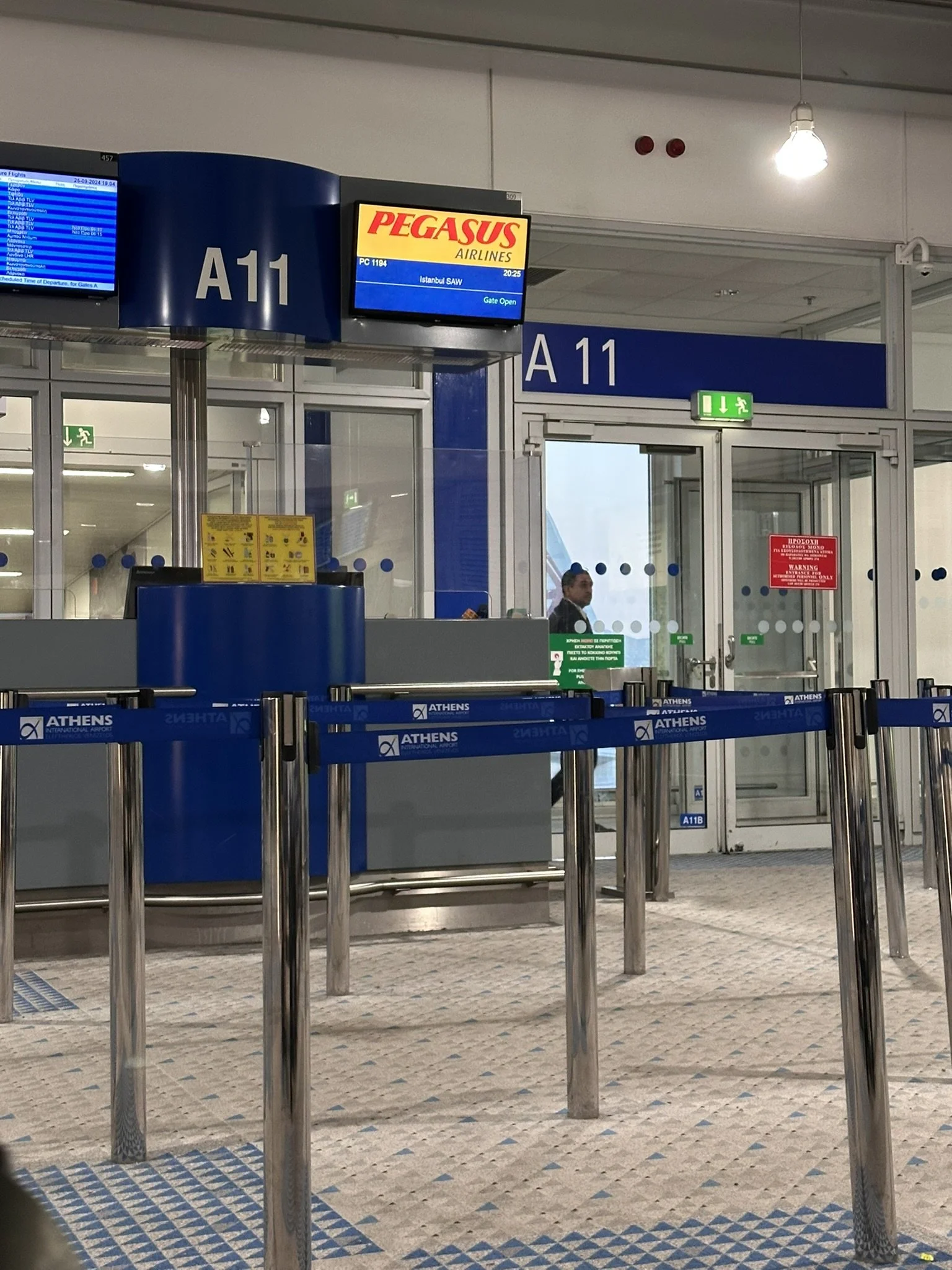Athens, Greece
Tattooed Travelers, welcome back to our Greece adventure! If you caught our last post, you know we’re on our honeymoon, and today we're trading Santorini’s sunsets for the ancient wonders of Athens.
Our morning started early at the Santorini Airport—and let me tell you, chaos is an understatement! Check-in counters don’t open until specific times, so there’s a lot of waiting around and long lines that feel like they’ll never end. But hey, it’s all part of the journey, right? Despite the airport madness, we made it to Athens on time!
Niche Hotel Athens
I had arranged for our hotel to pick us up, and it was such a relief to see our driver waiting as soon as we landed. No fuss, no stress—just the way we like it. A quick ride later, we arrived at our hotel, the Niche Hotel Athens, right in the heart of the city.
Now, I’ll be honest—my first impression of Athens was a little underwhelming. The heavy traffic and big-city vibe felt like a stark contrast to Santorini’s laid-back charm. But that all changed the moment we started seeing the city’s incredible sights. Catching a glimpse of the Acropolis towering above the city was absolutely breathtaking.
Smile Gastronomy
Since we arrived before check-in time and the hotel couldn’t accommodate an early check-in, they kindly let us leave our luggage so we could start exploring. First on our list? Breakfast—because we were starving after that early flight! We stumbled upon this cozy little spot just around the corner from our hotel called Smile Gastronomy, and it turned out to be the perfect find.
The service was spot-on—super responsive and genuinely kind. I ordered the avocado toast, and William went for a hearty plate of eggs, meat, and toast. The food came out quickly, and let me tell you, it was amazing. My avocado toast was perfectly balanced—the bread was crispy on the outside but soft inside, topped with creamy, ripe avocado, a drizzle of olive oil, and just the right hint of lemon. It had that fresh, vibrant taste that makes you feel like you’re starting your day right. William’s plate was equally impressive. The eggs were rich, the meat savory with just the right amount of seasoning, and the toast had that perfect golden crunch.
We’d give Smile Gastronomy a solid 10/10—the portions were just right, the flavors were on point, and the service made us feel welcome from the moment we walked in.
Panathinaiko Stadio
After breakfast, we still had a stretch of time before we could check in, so we decided to head out and explore a bit more of Athens. Our first stop? The Panathenaic Stadium—also known as Panathinaiko Stadio—an absolute must-see for history buffs and sports fans alike.
This iconic stadium is the only one in the world built entirely out of marble, and it has a history that stretches all the way back to 330 BC. Originally constructed to host the Panathenaic Games (similar to the ancient Olympic Games), it was later rebuilt in marble in 144 AD by the Athenian benefactor Herodes Atticus. Fast forward to the modern era, and the stadium played a huge role in reviving the Olympic spirit—it hosted the first modern Olympic Games in 1896 and was even used during the 2004 Athens Olympics.
What we thought would be a quick, 15-minute stroll from the hotel ended up feeling much longer under the hot Athenian sun. By the time we reached the stadium, we were already feeling the heat, but we were excited to dive into some history. We grabbed our tickets, headed inside, and were given an audio guide for a self-paced tour.
Unfortunately, we hit a bit of a snag—the stadium field was being converted for an upcoming concert, so we couldn’t walk on the track itself. While we still got to explore most of the stadium, it was a little disappointing not to be able to stand where ancient athletes once competed. Plus, the audio guide didn’t quite live up to expectations; it felt a bit dry and didn’t add much to the experience.
Still, we made the most of it and headed over to the permanent exhibition titled “Memories from Olympic Games: Posters and Torches from 1896 till Today.” This exhibit was a highlight, offering a fascinating glimpse into the evolution of the modern Olympics. It showcases official posters and Olympic torches from every Games since the revival of the Olympics in 1896—which, fun fact, started right here at the Panathenaic Stadium. The torches, each uniquely designed to reflect the culture of the host country, were especially cool to see up close. It’s amazing how these symbols of unity and competition have changed over time while still carrying that same Olympic spirit.
By the end of the visit, the heat had really caught up with us. Hot, tired, and in desperate need of a break, we stopped by the little canteen right outside the stadium for a much-needed slushie. It was the perfect icy treat to cool down before making the trek back to the hotel to see if we could finally check in.
Athens Photo Tour
After our hot trek back from the Panathenaic Stadium, we finally returned to the hotel—and good news—our room was ready! We checked in and headed straight upstairs, eager for a shower. The room at Niche Hotel Athens had a big, comfy bed and a clean, modern setup. While it was a bit on the smaller side, it had everything we needed for a comfortable stay, especially after a busy day of travel and sightseeing.
After freshening up, we got dressed up for something special—a photoshoot we had booked to capture some honeymoon memories! This was a gift we received through Spur Experiences, but the session itself was arranged through Athens Photo Tour. I was super impressed with how quickly they got back to me after I booked. I received an email almost instantly asking for our preferred time and date, which made me feel really confident about the whole process—they were so on top of it!
We made our way to the meeting spot, where we were greeted by our photographer, Panos. From the moment we met him, Panos had such great energy—he was lively, friendly, and knew exactly how to guide us through different poses. He made us feel completely at ease in front of the camera, which is saying something because we’re not usually the most natural posers!
Our shoot took us through some of Athens’ most beautiful spots, including a hill with an incredible view overlooking the Acropolis. We stopped at several picturesque corners around the city, capturing shots with ancient ruins in the background and charming Athenian streets all around us. It wasn’t just about the photos—it was a genuinely fun experience, filled with lots of laughter and candid moments.
When we finally received the photos, we were blown away. The final shots were definitely worth it—they perfectly captured the joy and excitement of our honeymoon in Athens. We got to choose from a wide selection of pictures from different locations, and Panos’ eye for detail really showed in every shot.
We would definitely recommend this photoshoot experience to anyone visiting Athens, especially if you're looking to capture special memories. Between the beautiful locations, the personalized experience, and Panos’ kind, professional approach, it was an unforgettable highlight of our trip!
Stork Rooftop Bar
After the photoshoot, we made our way back to the hotel, ready to wind down with dinner at the Stork Rooftop Bar, located right on top of Niche Hotel Athens. The real draw of this spot is the incredible view—the Acropolis glowing in the night sky was absolutely mesmerizing. Watching the ancient ruins illuminated against the dark backdrop of Athens was one of those pinch-me moments, and we couldn’t have asked for a better setting to end the night.
Unfortunately, the service didn’t quite match the view. From the moment we arrived, we were ignored several times before anyone finally came over to take our order. It felt like we had to work pretty hard just to get noticed, and the overall vibe from the staff was a bit indifferent, which was disappointing considering the beautiful setting.
Once we finally got our drinks, we placed our dinner orders. I went with the Shrimp Orzo, which came with sun-dried tomatoes, pistachios, turmeric, and mastiha. William ordered the Lamb Risotto, featuring lemon, goat butter, and Graviera cheese from Crete. The food took a while to arrive, and when it did, it was… well, just okay.
My Shrimp Orzo had a nice presentation, and the combination of flavors sounded promising on paper, but it didn’t quite come together on the plate. The orzo was slightly overcooked, leaning more on the mushy side than al dente. The shrimp were fresh but lacked that juicy, flavorful punch I was hoping for. The sun-dried tomatoes added a bit of tanginess, but the pistachios and turmeric felt more like an afterthought than an integral part of the dish. It wasn’t bad, but it wasn’t anything memorable either.
William’s Lamb Risotto had a similar vibe. The lamb was tender, but it lacked seasoning, and the risotto itself was a bit too heavy, even with the brightness of the lemon trying to cut through. The Graviera cheese from Crete added a nice richness, but overall, the flavors didn’t pop the way we expected from such a beautifully described dish.
While the food and service didn’t blow us away, the view alone made it worth the visit. We would rate a 5 out of 10. Sitting under the stars with the Acropolis glowing in the background was truly special, even if the meal itself wasn’t unforgettable. If you’re looking for a place to grab a drink and soak in some of the best views Athens has to offer, the Stork Rooftop Bar is worth a stop—but just for the drinks.
Breakfast
After dinner, we headed back to our room, exhausted from the long day of exploring, posing, and braving the Athens heat. With one last full day ahead of us, we called it a night, ready to rest up for what promised to be another hot and adventure-filled day in this historic city.
The next morning, we woke up and enjoyed a small breakfast buffet at the hotel, served at the Stork Rooftop Bar. The breakfast itself was simple and basic, but the incredible view more than made up for it. As we ate, we soaked in the stunning scenery, making it the perfect way to start our day. Before heading out, we requested a late check-out since we had a tour of the Acropolis and Parthenon scheduled and wanted to freshen up afterward. Thankfully, the hotel was accommodating and agreed to our request.
Acropolis and Parthenon Guided Walking Tour
We made our way to the meeting spot listed on our tour with Athens Walks, which was conveniently close to our hotel. We arrived early, but it turned out to be unnecessary—people showed up late anyway. Once everyone had gathered, we were given Whisper tour guide systems, which made it easy to hear our guide throughout the tour. Our guide was clear, engaging, and incredibly knowledgeable, sharing tons of fascinating history and details along the way.
With our guide and tickets, we breezed past the long lines and made our way into Acropolis. Our guide first told us the history of Acropolis, The Acropolis—meaning "highest point of the city" in Greek—is a flat-topped hill that rises above Athens, serving as both a fortress and the heart of ancient Athenian culture. While many Greek cities had an acropolis, Athens' is the most famous, symbolizing the city’s power, wealth, and artistic achievements during its Golden Age in the 5th century BC. The Acropolis stands today as a powerful symbol of ancient Greek civilization, democracy, and architectural brilliance.
Theater of Dionysus
Our first stop was the Theater of Dionysus, considered the world’s first theater and the birthplace of Greek drama. Built in the 6th century BCE, it was dedicated to Dionysus, the god of wine, fertility, and theater. This open-air amphitheater could originally seat up to 17,000 spectators and was the stage for the plays of famous ancient playwrights like Sophocles, Euripides, and Aeschylus.
It’s amazing to think that the very foundation of modern theater was laid right here, where audiences once gathered to watch tragedies and comedies that explored human nature, politics, and mythology. Even though much of the original structure has worn away over time, you can still see the stone seating and imagine the vibrant performances that once took place.
Temple of Themis
Our next stop was the Temple of Themis, a lesser-known but fascinating site within the Acropolis. Themis, in Greek mythology, was the Titaness of divine law, order, and justice. She represented fairness and was often depicted holding the scales of justice—a symbol still recognized today.
The temple itself is more of a ruin compared to some of the other grand structures, but its historical significance is profound. It was a reminder of how deeply the ancient Greeks valued law and balance in both their society and mythology. Our guide explained how Themis was seen as a foundational figure, often consulted by Zeus himself when making important decisions, emphasizing her influence even among the gods.
Odeon of Herodes Atticus
We continued on until we reached the Odeon of Herodes Atticus, an impressive stone theater built into the southwest slope of the Acropolis. Our guide explained that it was constructed in 161 AD by Herodes Atticus, a wealthy Athenian benefactor, in memory of his wife, Aspasia Annia Regilla. Unlike the open-air Theater of Dionysus, the Odeon originally had a wooden roof made of cedar, which created excellent acoustics for musical performances and poetry readings.
The structure could seat around 5,000 people and was considered one of the finest theaters of its time. Though it fell into disrepair over the centuries, it was beautifully restored in the 1950s and is still used today for concerts and performances during the Athens Festival.
Then we began our ascent to the Parthenon, and by this time, the heat was really starting to set in. The walk itself wasn’t too difficult, but navigating through the crowds on the narrow, one-way path made it a bit frustrating. Once we reached the top, we entered through the Beulé Gate, the first monumental gateway visitors encounter. Our guide explained that it was named after the French archaeologist Ernest Beulé, who discovered it in the 19th century. Built in the Roman period, the gate once served as a fortified entrance to the Acropolis.
Just beyond the gate, the first structure we saw was the Monument of Agrippa. This tall, rectangular pedestal was built in honor of Marcus Vipsanius Agrippa, the Roman general and son-in-law of Emperor Augustus. It originally supported a bronze statue of Agrippa riding a chariot, symbolizing Rome’s influence over Athens.
Temple of Athena Nike
Our guide then led us to the Temple of Athena Nike, a small but significant temple perched on the edge of the Acropolis. Dedicated to Athena as the goddess of victory (Nike means victory in Greek), the temple was built around 427–424 BC. It’s known for its elegant Ionic columns and friezes depicting historical battles, celebrating both military success and the protective power of Athena over Athens.
Erechtheion
Next, we stopped at the Erechtheion, one of the most iconic and sacred buildings on the Acropolis, famous for its Porch of the Caryatids, where six beautifully sculpted female figures serve as columns. Our guide explained that the Erechtheion isn’t just architecturally unique—it also holds deep mythological significance. It is said to mark the very spot of the legendary contest between Athena and Poseidon for the patronage of the city.
According to the myth, both gods wanted to become the protector of the city, so they each offered a gift to its people. Poseidon struck the ground with his trident, and a saltwater spring (or in some versions, a horse) emerged, symbolizing naval power and strength. Athena, on the other hand, offered the olive tree, representing peace, prosperity, and sustenance. The people of Athens—or, in some versions, King Cecrops—chose Athena’s gift, as it provided lasting value through food, oil, and wood. This myth explains why the city was named Athens in her honor. Our guide pointed out the sacred olive tree near the Erechtheion, said to be a descendant of Athena's original gift, and the mark on the ground believed to be from Poseidon’s trident.
Parthenon
After exploring the Erechtheion, we finally made our way to the main attraction—the magnificent Parthenon. Standing before it, we couldn’t help but be awestruck by its sheer size and elegance. Built between 447 and 432 BC during Athens’ Golden Age, the Parthenon was designed by architects Ictinus and Callicrates under the supervision of the renowned sculptor Phidias, who also crafted the colossal statue of Athena that once stood inside.
Our guide delved into the Parthenon’s architectural brilliance. It’s a prime example of Doric architecture, the simplest of the three classical Greek styles, characterized by sturdy columns with plain capitals. However, the Parthenon isn’t just a typical Doric temple—it incorporates subtle Ionic elements, such as a continuous frieze that wraps around the inner chamber (the cella), depicting the Panathenaic Procession, a festival honoring Athena.
What’s truly fascinating is the optical illusion built into its design. The architects used a technique called entasis, where the columns slightly bulge in the middle to counteract the illusion of concavity that straight columns can create. Additionally, the columns lean inward ever so slightly, and the foundation of the temple curves upward in the center. These subtle adjustments make the structure appear perfectly straight and harmonious to the human eye, a testament to the ancient Greeks’ advanced understanding of geometry and aesthetics.
The Parthenon originally housed the towering statue of Athena Parthenos, made of gold and ivory, which stood nearly 40 feet tall. She was depicted holding Nike, the goddess of victory, in one hand, and a shield in the other, symbolizing her role as both a warrior and protector. Though the statue has long been lost, the Parthenon remains a symbol of classical beauty and the enduring legacy of ancient Greece. As we stood there, surrounded by history and mythology, it was impossible not to feel the weight of the centuries and the incredible achievements of this ancient civilization.
After we finished exploring the Parthenon, our guide collected the Whisper audio devices and gave us instructions on how to exit the Acropolis. She also let us know that we were welcome to stay and explore more on our own, which we really appreciated. It was nice having the flexibility to wander at our own pace and take in the sights a bit longer.
What We Liked About The Tour:
Knowledgeable Guide: The guide was engaging, easy to hear with the Whisper audio devices, and provided fascinating historical and mythological insights.
Skip-the-Line Access: Breezed past the long lines at the Acropolis, saving time and avoiding unnecessary waiting.
Well-Organized Tour: The tour followed a clear path, covering all the major highlights with enough time to appreciate each site.
Flexibility: We appreciated being given the option to stay and explore on our own after the tour ended.
Clear Instructions: The guide provided easy-to-follow directions for exiting the Acropolis if we chose to leave.
What We Didn’t Like:
Crowds: The narrow, one-way paths leading to the Parthenon were crowded, making the walk more frustrating, especially in the heat.
Overall, we had an amazing experience with Athens Walks. The tour was informative, well-paced, and made exploring the Acropolis so much more meaningful. Having a knowledgeable guide really brought the history and mythology to life, giving us a deeper appreciation for the sites we visited. The Whisper audio devices were a huge plus, ensuring we could hear everything clearly despite the crowds. While the heat and busy pathways were a bit challenging, they didn’t take away from how much we enjoyed the tour. We 100% recommend this tour to anyone visiting Athens. Skipping the long lines alone is worth it, but the insights from the guide make it an unforgettable experience. Whether you’re a history buff or just looking to explore one of the world’s most iconic landmarks, this tour is a must-do!
Acropolis Museum
After finishing up at the Acropolis, we made our way back down to the hotel for a quick shower before checking out. Thankfully, we still had plenty of time to spare before heading to the airport, so we asked if we could leave our luggage at the hotel. They were more than happy to accommodate us, which made things a lot easier. With our bags safely stored, we decided to head to the Acropolis Museum to dive even deeper into the rich history we had just experienced.
Once we arrived near the Acropolis Museum, we were surprised to see a massive line stretching outside. I had pre-booked our tickets online, hoping to skip the wait, but unfortunately, the line for pre-booked tickets was just as long. We ended up waiting about 20 minutes before we were finally inside. The delay wasn’t due to ticketing, but rather the mandatory bag inspection, which slowed things down for everyone.
Once inside, we ran into even more issues with our tickets—one of them just wouldn’t scan. We were directed to the ticket desk, where they gave us a handwritten number to take back to the person at the scanner. After a quick glance at the number, she finally let us through. It was a bit of a hassle, but once we were in, we were ready to explore the museum and dive deeper into Athens' rich history.
Despite the hiccups getting in, once we stepped inside the Acropolis Museum, it was completely worth the hassle. The museum itself is stunning—modern, bright, and thoughtfully designed to complement the ancient artifacts it houses. Floor-to-ceiling glass walls offer breathtaking views of the Acropolis above, creating this surreal connection between the ancient world and the present day. It felt like we were walking through history, with the Parthenon practically watching over us.
The museum is home to thousands of artifacts excavated from the Acropolis and surrounding areas. One of the first things we noticed was the glass floor in the entrance, where you can see the remains of an ancient Athenian neighborhood beneath your feet. It’s wild to think about people living their daily lives there thousands of years ago, and now we’re just casually walking over it.
As we made our way through the exhibits, we saw intricate sculptures, friezes, and everyday objects from ancient Athens. One of the highlights was the Caryatids—the original statues from the Erechtheion’s porch. They’re displayed in a way that lets you see them up close, and standing next to them, you can really appreciate the delicate details and craftsmanship. It’s humbling to realize how much skill and artistry went into these works, especially considering the tools they had at the time.
But the real showstopper is on the top floor: the Parthenon Gallery. The entire space is designed to mirror the Parthenon’s layout, with the frieze panels arranged just as they would have been on the actual temple. Some of the originals are here, while others are plaster replicas of the ones taken to the British Museum. Seeing these ancient carvings up close was incredible—they tell stories of gods, battles, and Athenian life in such intricate detail that you can almost feel the energy of the ancient city.
After exploring the inside of the museum, we headed outside to check out the ruins beneath the building—and honestly, the archaeological site below ended up being our favorite part. Walking along the raised glass pathways, we got an incredible glimpse into the daily life and architectural style of ancient Athens.
You could see the foundations of houses, courtyards, and even ancient streets, all remarkably well-preserved. It felt surreal to stand above these ancient neighborhoods, imagining what life must have been like thousands of years ago—families gathering in their homes, artisans working in small shops, and people navigating the same streets we were now peering down at. It brought history to life in a way that felt both personal and immersive.
While the artifacts and sculptures inside were amazing, there was something about seeing the actual remains of everyday life that really stuck with us. It was like peeling back layers of time and getting to peek into the heartbeat of ancient Athens.
Athina Bistrot
Once we finished at the museum, we decided to squeeze in one last meal before flying out of Greece. We headed to what seemed like a popular street, Stratigou Makrygianni Ioanni, which was buzzing with both locals and tourists. After a bit of strolling, we stumbled upon Athina Bistrot. Despite the busy crowd, they quickly found us a table, and the service was impressively swift.
We ordered a Greek salad, chicken gyros, and lamb gyros, wanting to savor a few more traditional flavors before leaving. The Greek salad was incredibly fresh—juicy tomatoes, crisp cucumbers, and sharp red onions tossed with green bell peppers and Kalamata olives. The creamy slab of feta cheese on top was the star of the dish, perfectly briny and rich, balanced by a simple drizzle of olive oil and a sprinkle of oregano. Every bite tasted like summer.
The chicken gyros were tender and flavorful, with just the right balance of seasoning. The meat was juicy, wrapped in warm, soft pita bread, and topped with fresh tomatoes, onions, and a generous dollop of creamy, garlicky tzatziki sauce. It had this perfect mix of smoky, savory, and tangy flavors that made it impossible to put down.
The lamb gyros were equally delicious but had a deeper, richer flavor. The lamb was perfectly spiced, slightly charred on the edges, and incredibly juicy inside. The savory meat paired beautifully with the fresh toppings and the cool tzatziki, creating this melt-in-your-mouth combination that was both hearty and satisfying.
The whole meal was a perfect way to end our trip—quick, delicious, and full of authentic Greek flavors that made us wish we had just one more day to keep eating our way through Athens. We’d rate Athina Bistrot a clear 10/10. The service was friendly and efficient, even with how busy they were, and the food was incredibly fresh and flavorful.
After our last delicious Greek meal, we headed back to the hotel to pick up our luggage. We asked the front desk if they could call us a taxi to the airport, and they were happy to help. The taxi arrived shortly after, and we began our journey to the airport, feeling both satisfied and a little nostalgic about leaving Athens behind.
Athens Overall Impression
Athens exceeded all our expectations—a perfect blend of ancient history and vibrant modern life. From exploring the Acropolis and its iconic landmarks like the Parthenon and Erechtheion, to diving deeper into history at the Acropolis Museum, every moment felt surreal. The archaeological site beneath the museum, offering a glimpse into daily ancient life, was a standout for us.
And the food? Absolutely unforgettable. Fresh Greek salads, flavorful gyros, and our final meal at Athina Bistrot were the perfect end to our time in Greece. Athens is a city that leaves a lasting impression, But our adventure wasn’t over just yet—we were off to the final leg of our honeymoon: Antalya, Turkey. We couldn’t wait to see what new experiences awaited us there!
Table of Contents
- Niche Hotel Athens
- Smile Gastronomy
- Panathinaiko Stadio
- Athens Photo Tour
- Stork Rooftop Bar
- Breakfast
- Acropolis and Parthenon Guided Walking Tour
- Theater of Dionysus
- Temple of Themis
- Odeon of Herodes Atticus
- Temple of Athena Nike
- Erechtheion
- Parthenon
- Acropolis Museum
- Athina Bistrot
- Athens Overall Impression
At The Tattooed Travelers, our travel diary offers a personal and immersive look into our adventures around the world. It’s a vibrant collection of stories, reflections, history, sights, and even the smells that make each journey unforgettable. From breathtaking destinations and mouthwatering meals to behind-the-scenes moments and valuable lessons learned, our travel diary captures the magic of exploring the world, one memory at a time. Whether you’re seeking inspiration, practical advice, or a spark of wanderlust, our diary invites you to wander with us and feel the thrill of discovery.
Looking for something more to the point? Our blog is here for you! Packed with concise itineraries, practical tips, and easy-to-follow guides, it’s the ultimate resource for planning your next adventure effortlessly. Skip the storytelling and dive straight into the essentials—your next destination is just a click away!
Recent Posts



